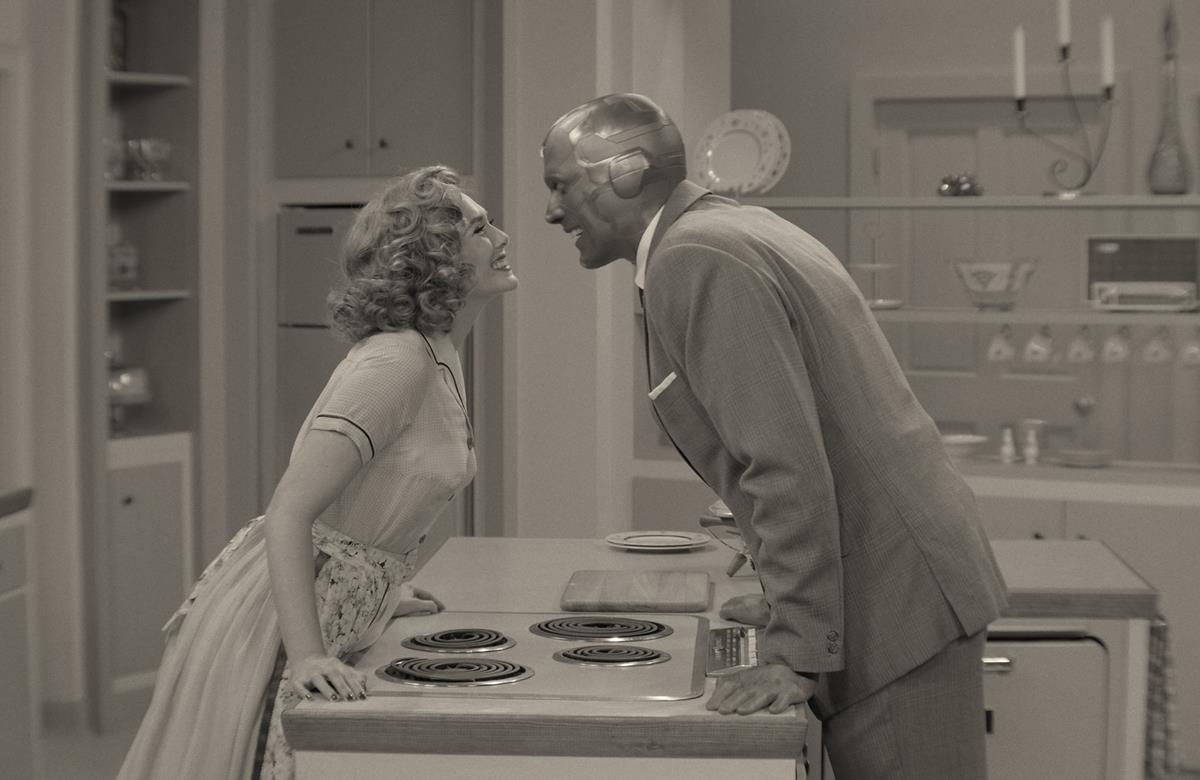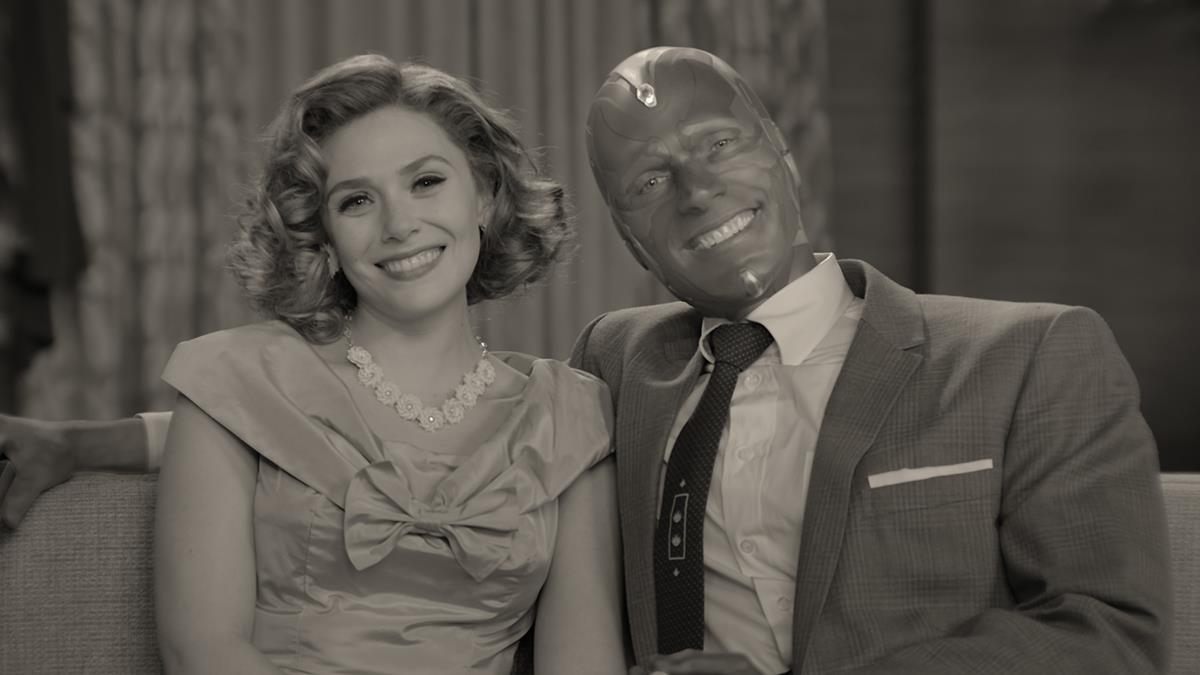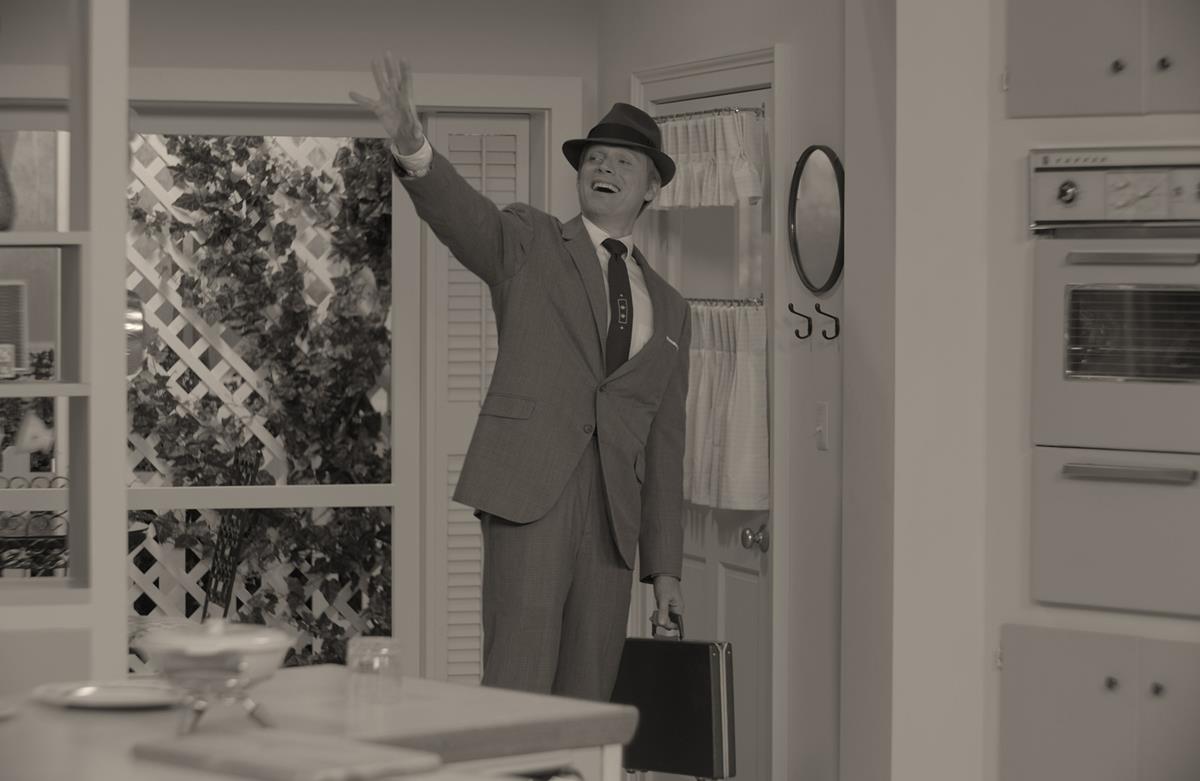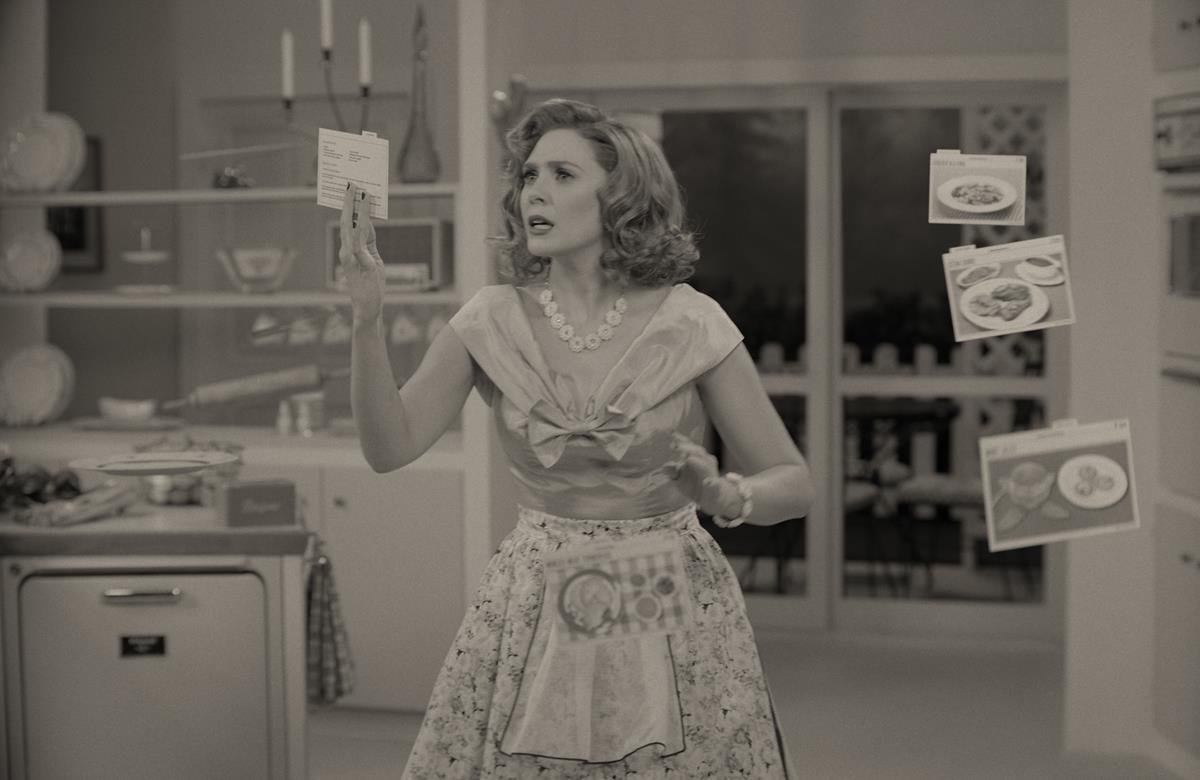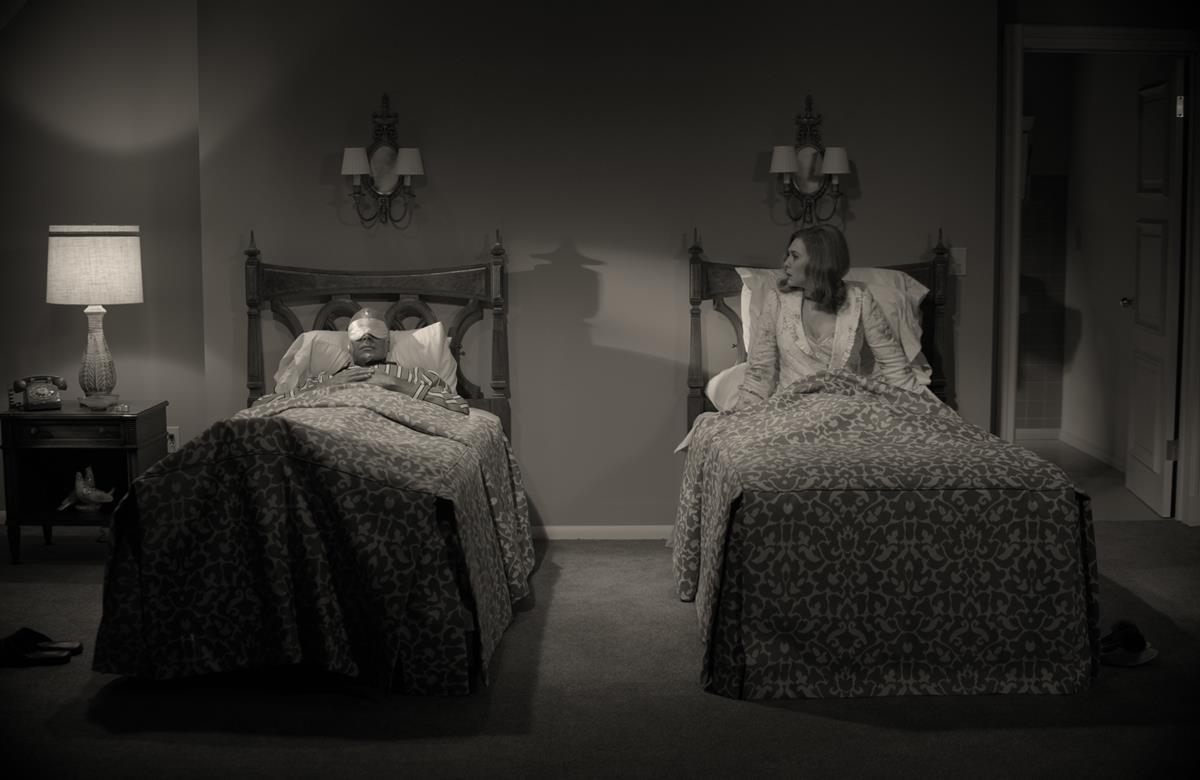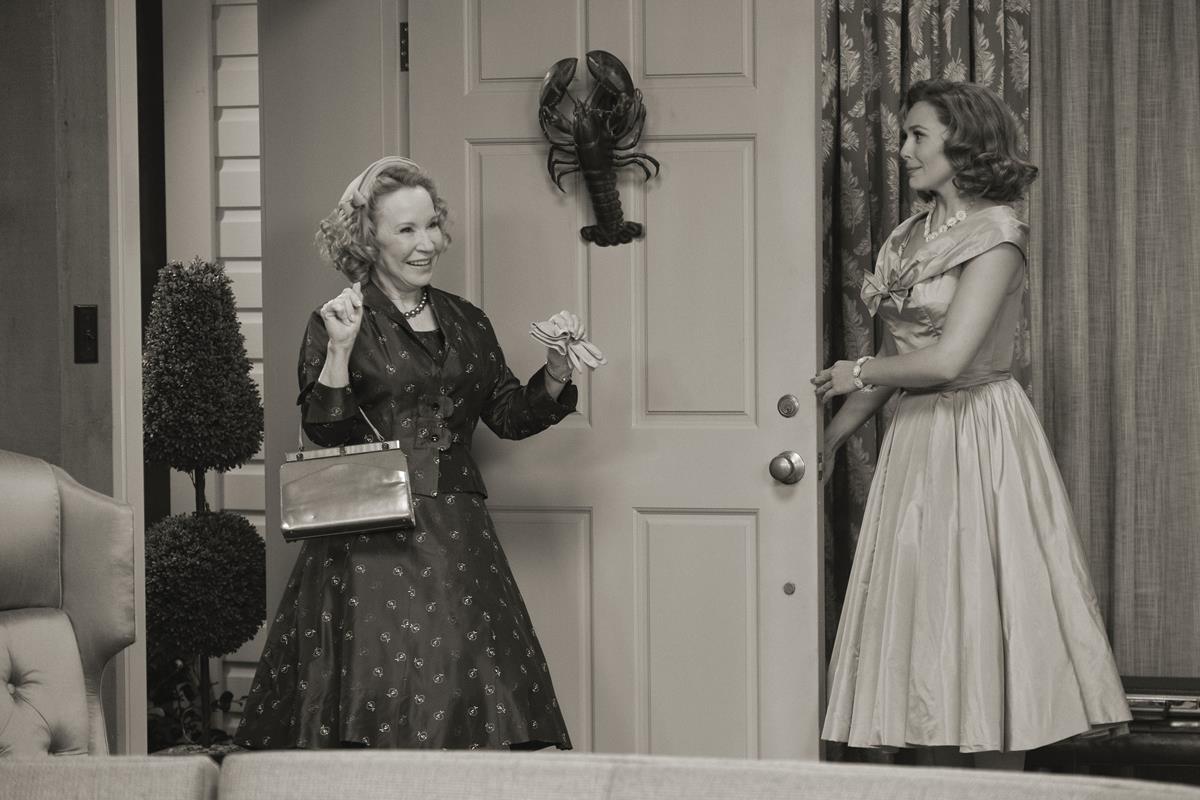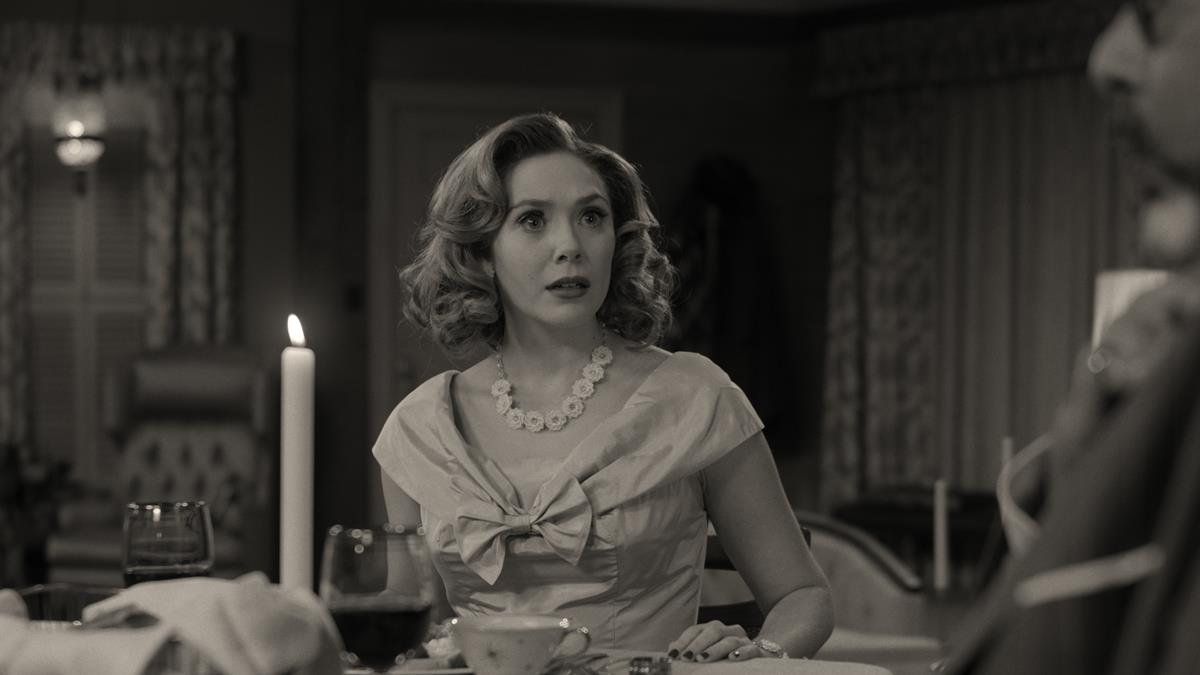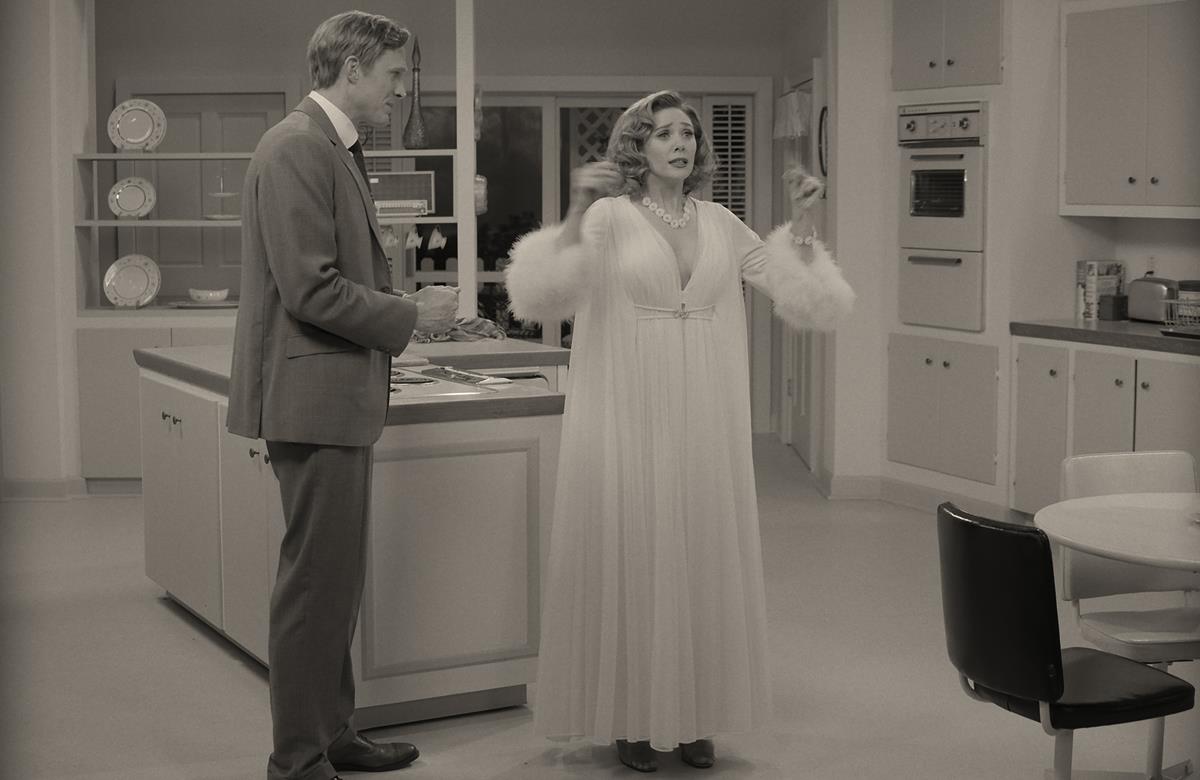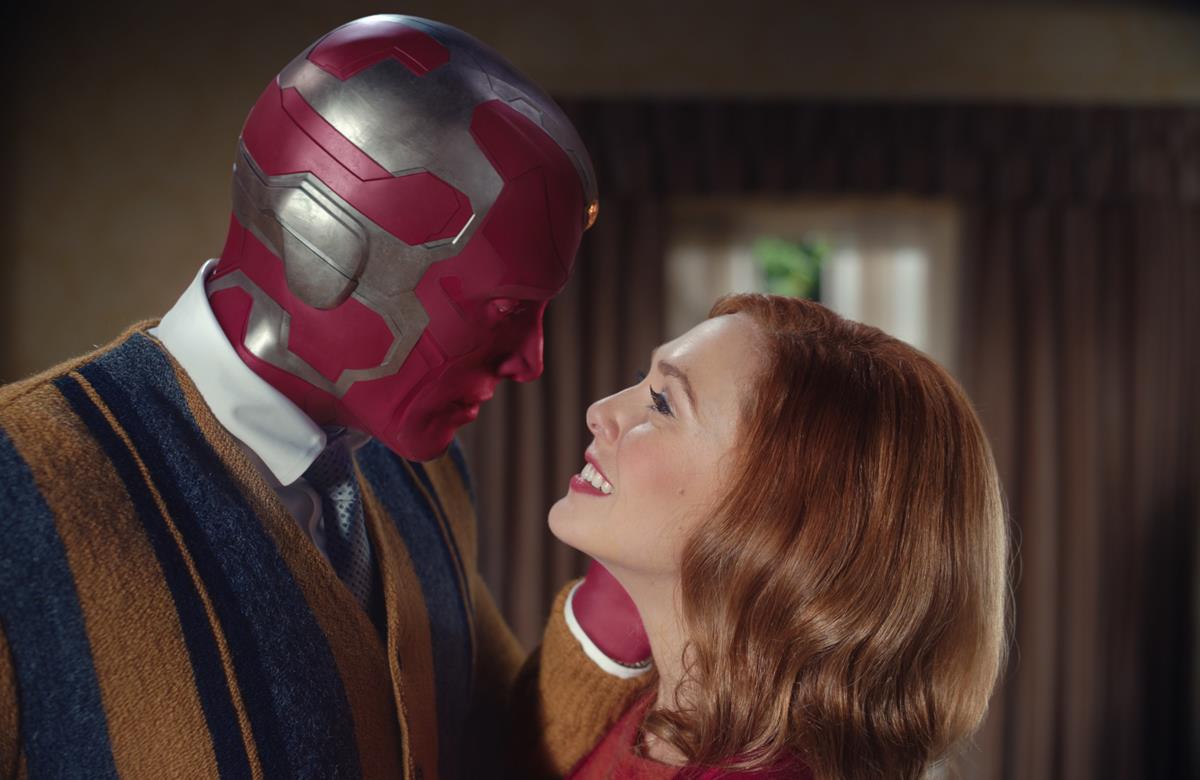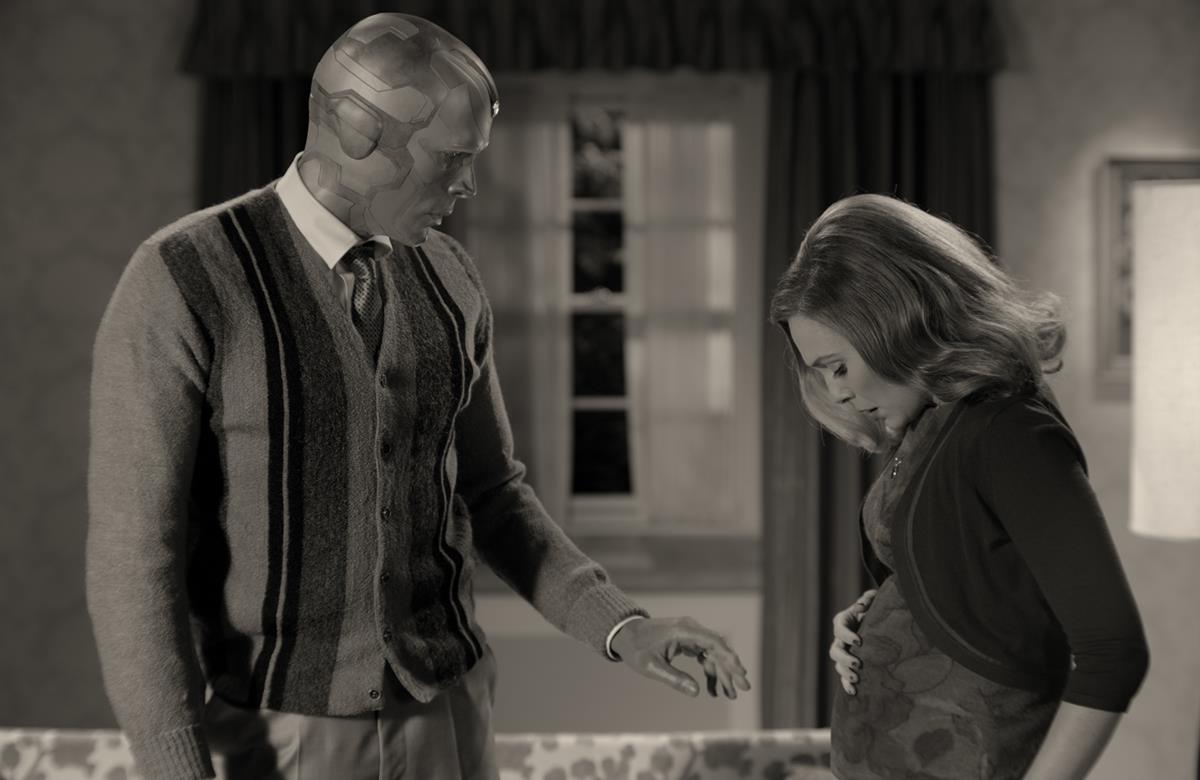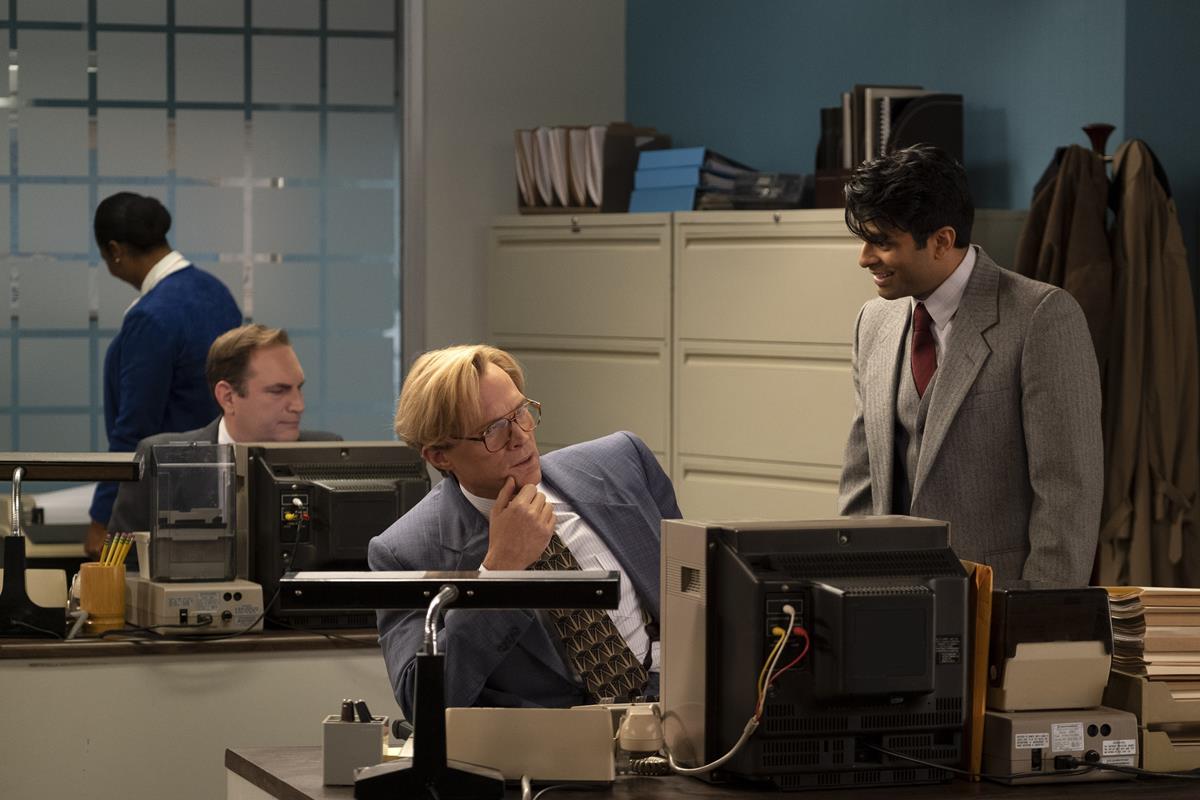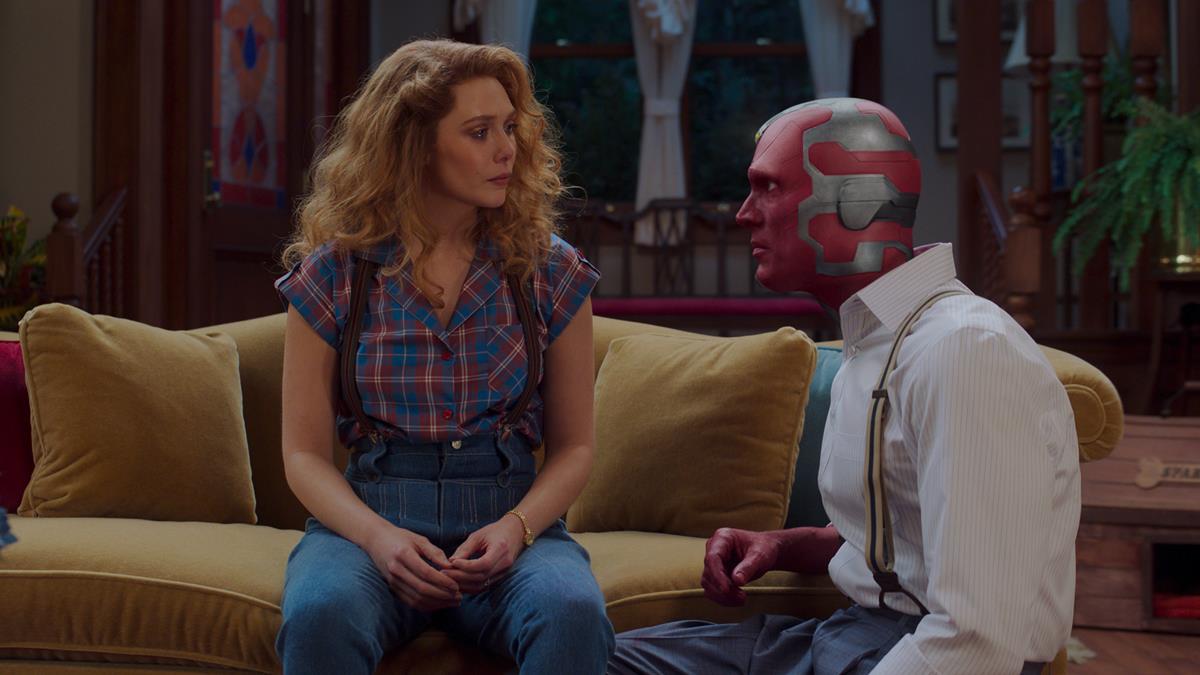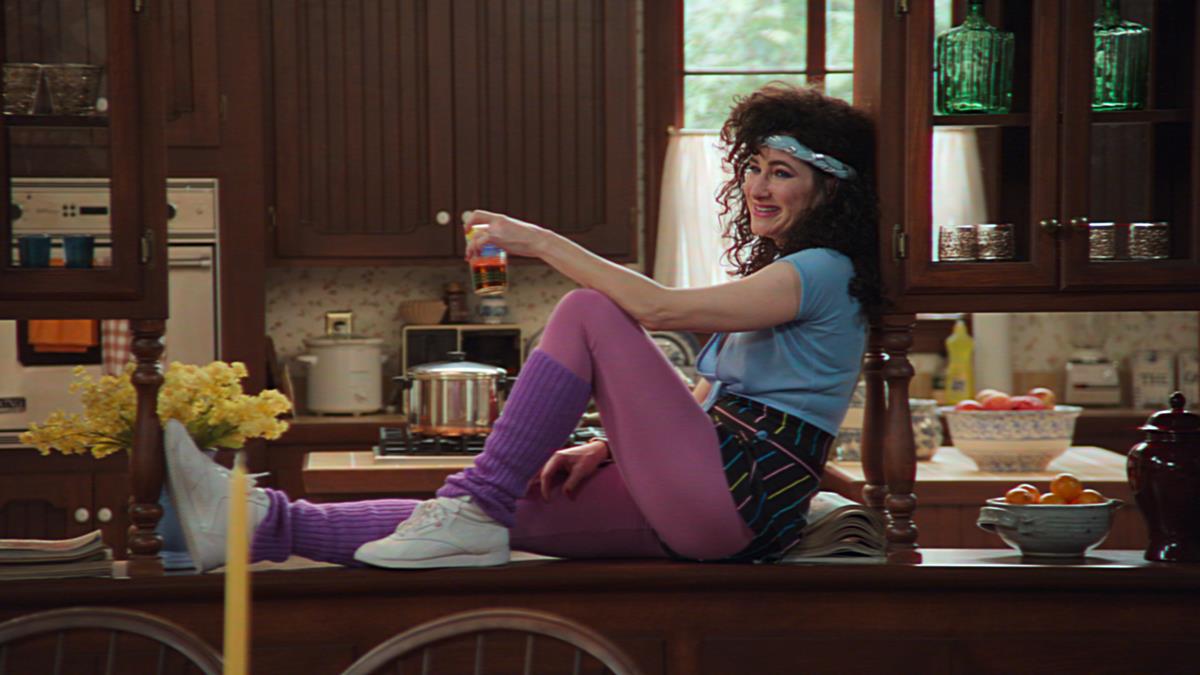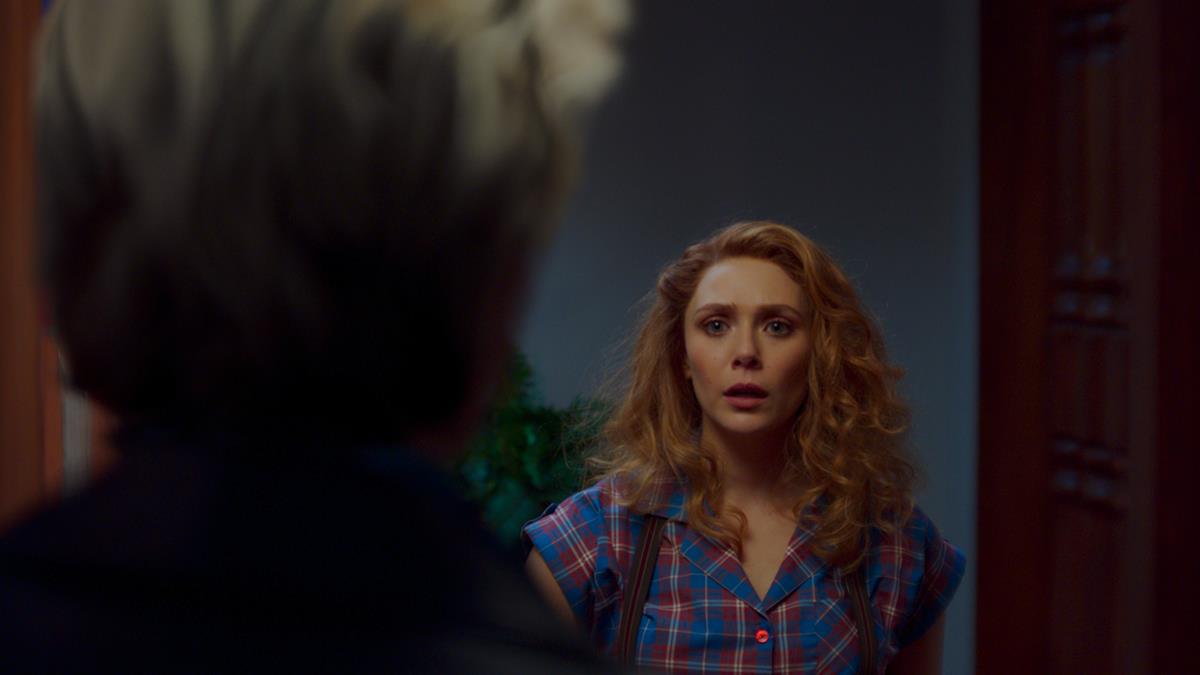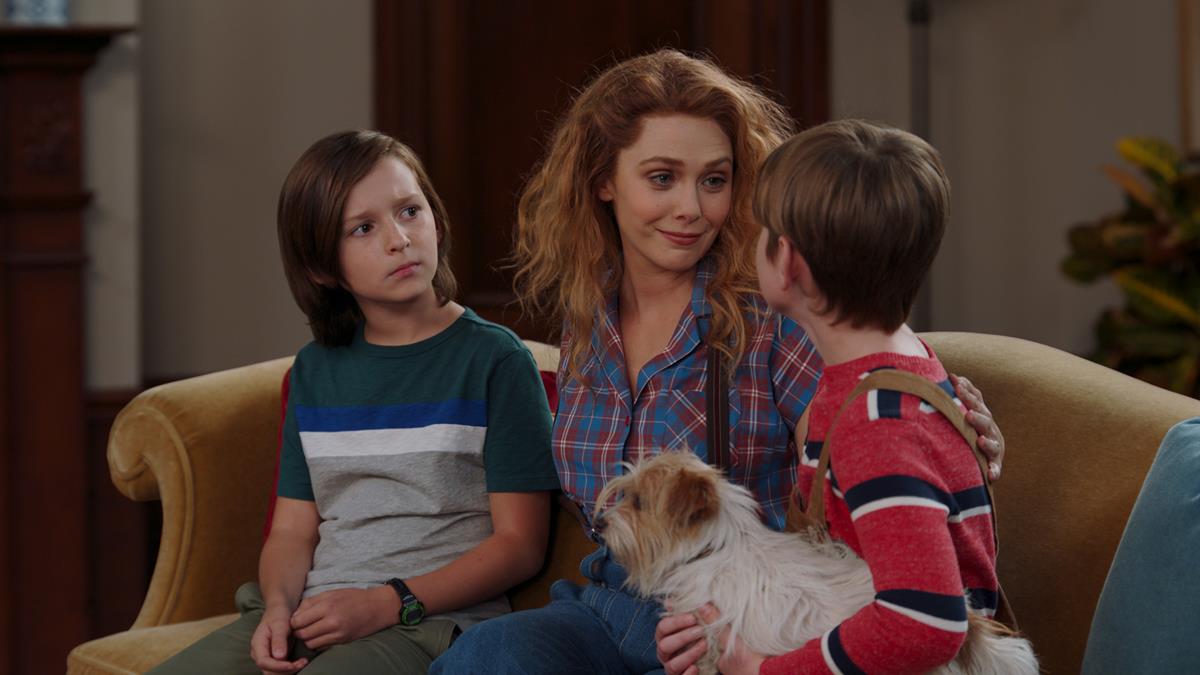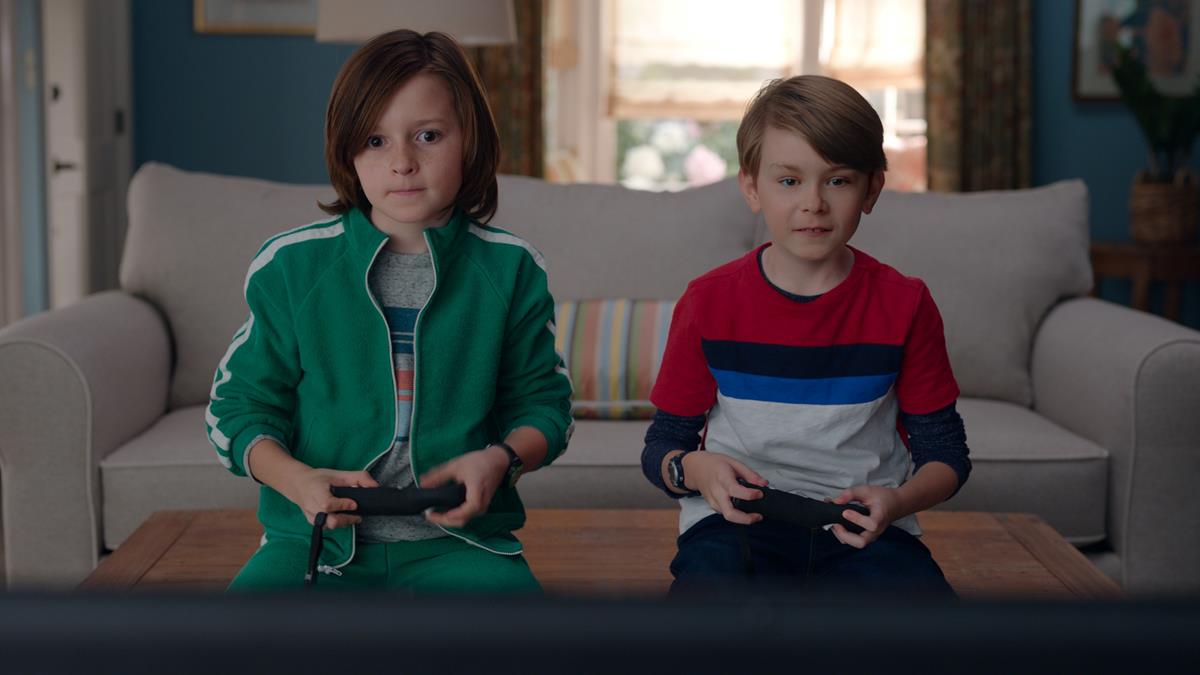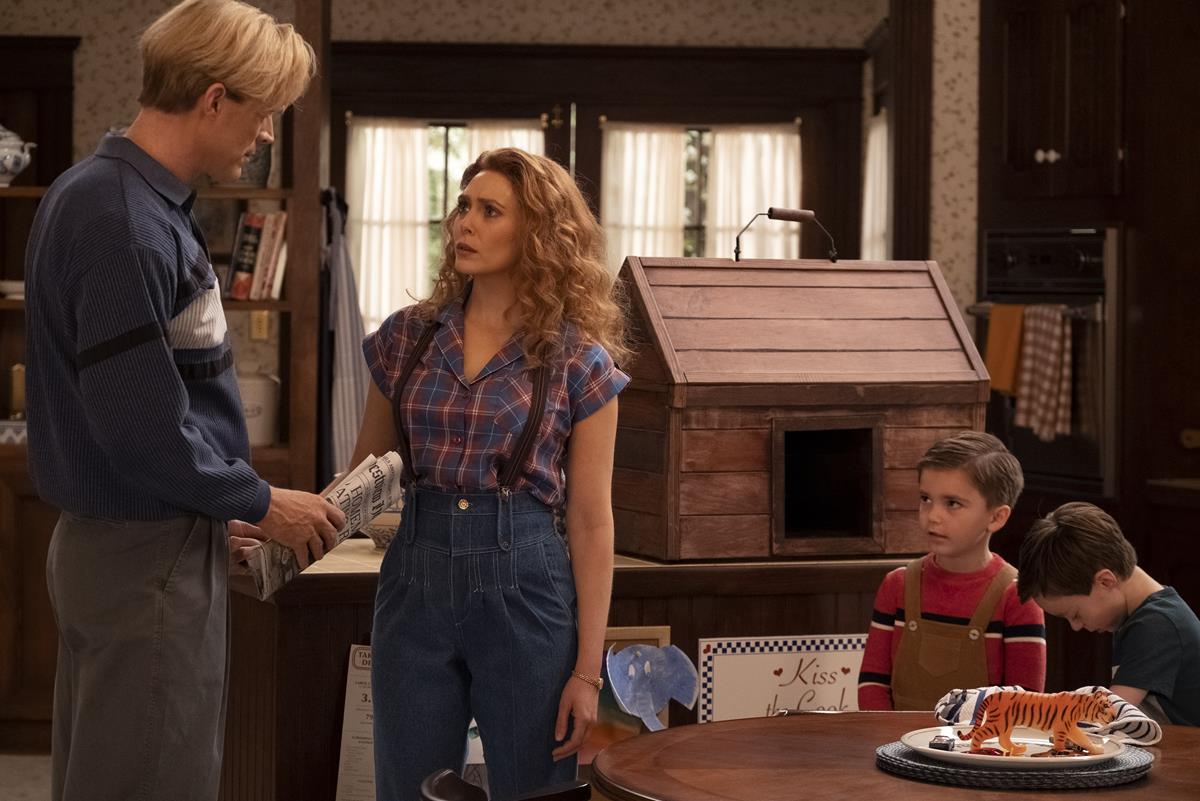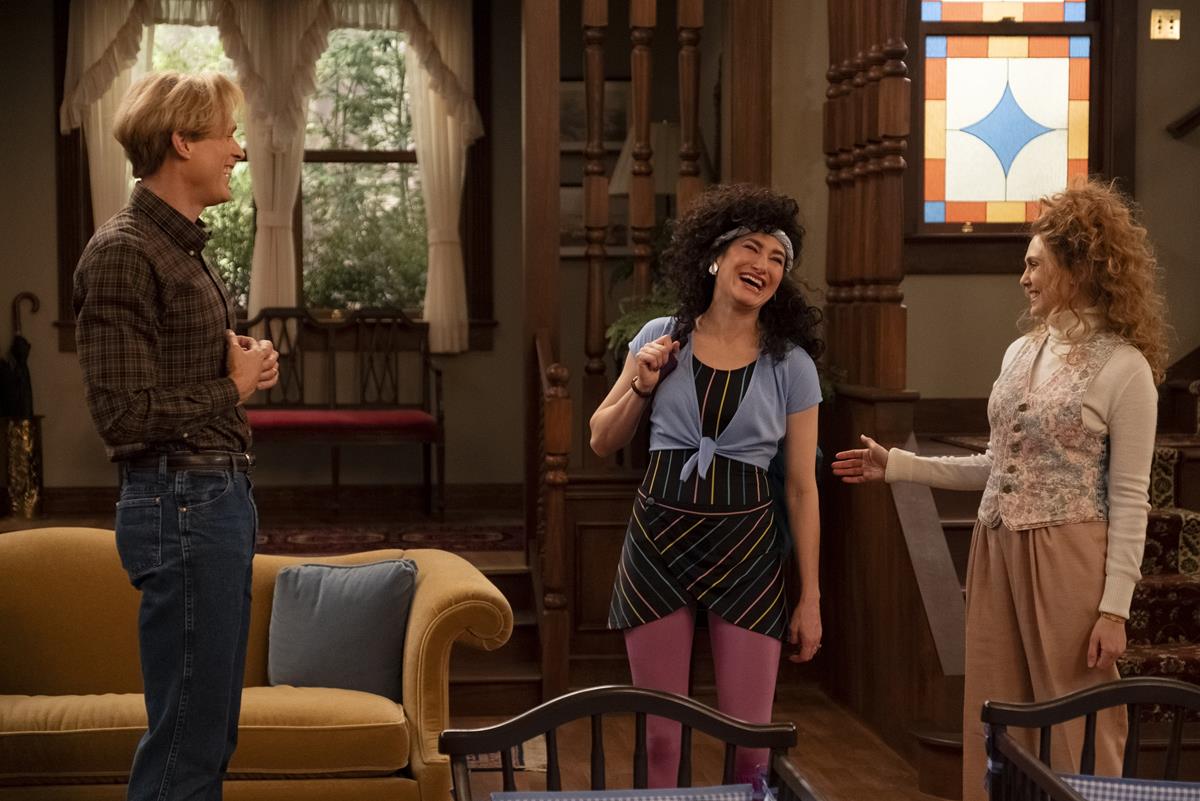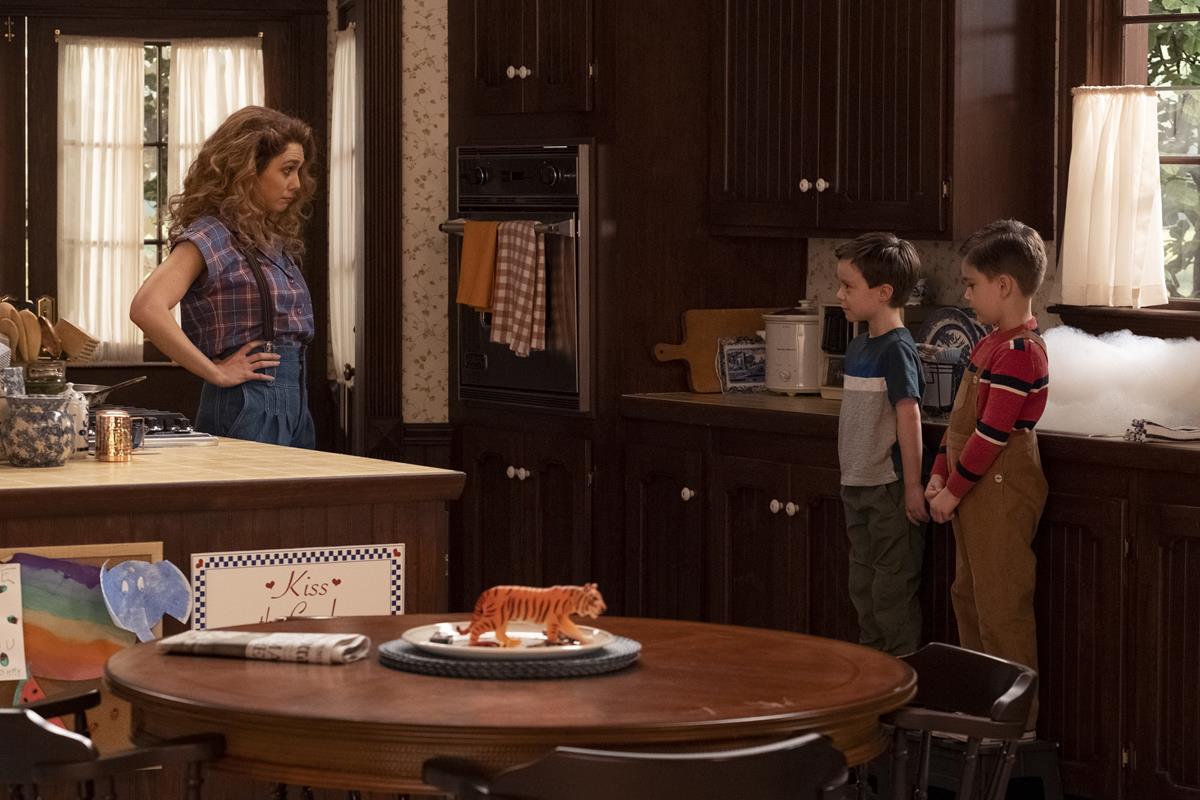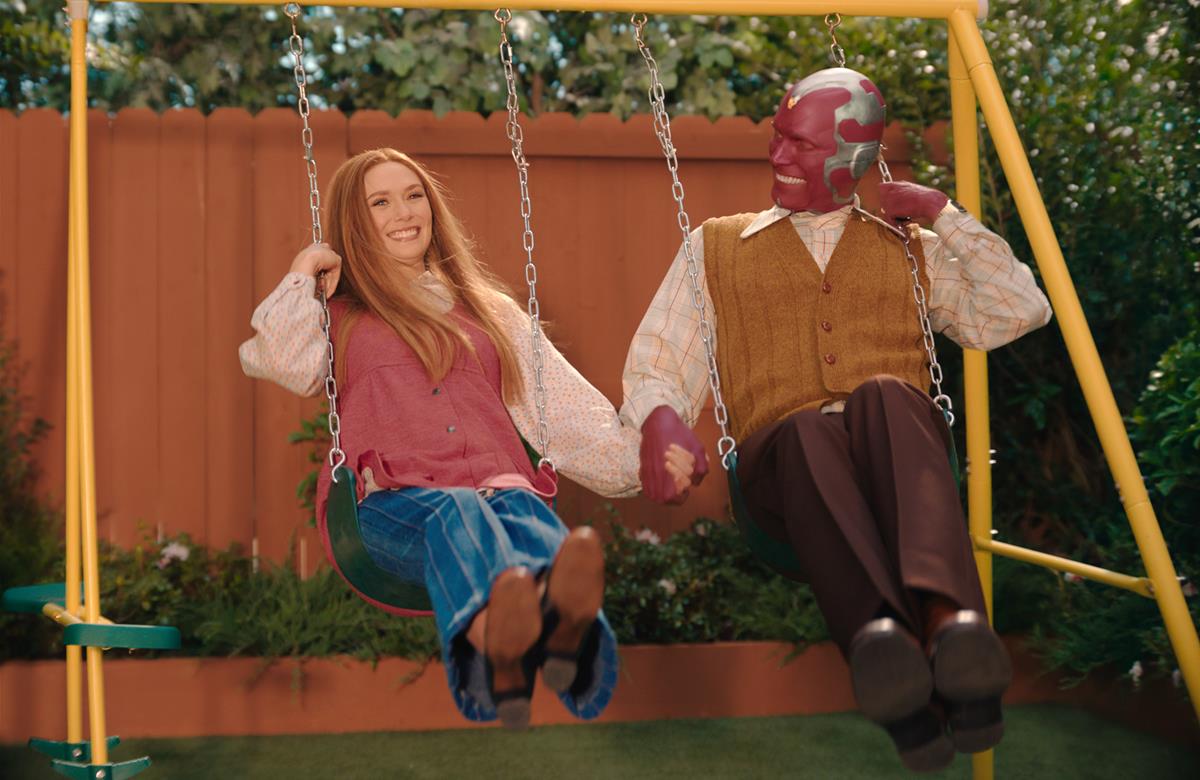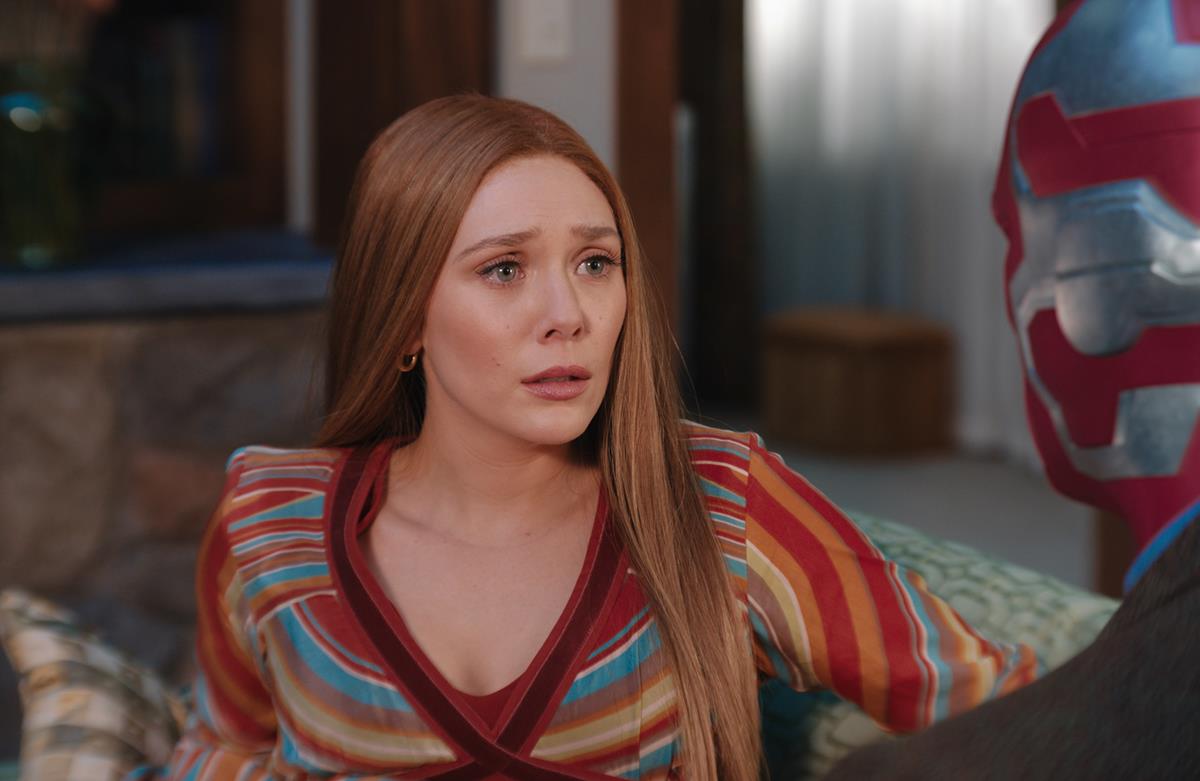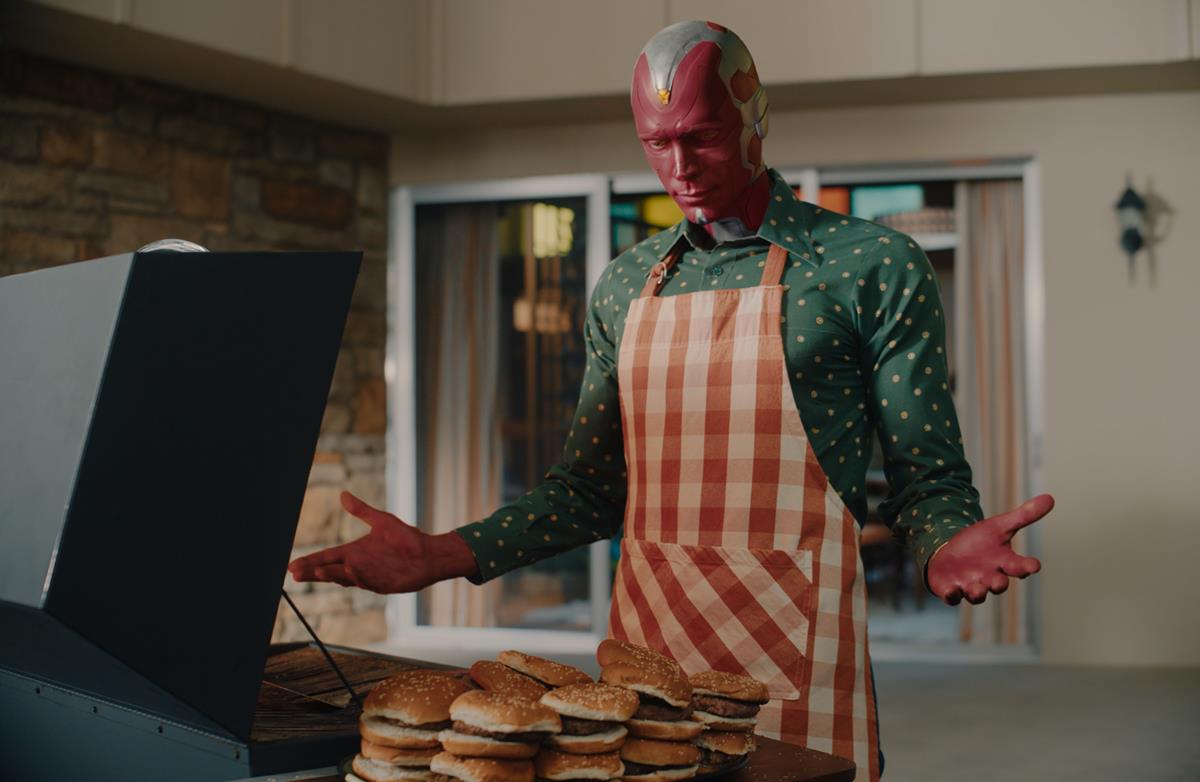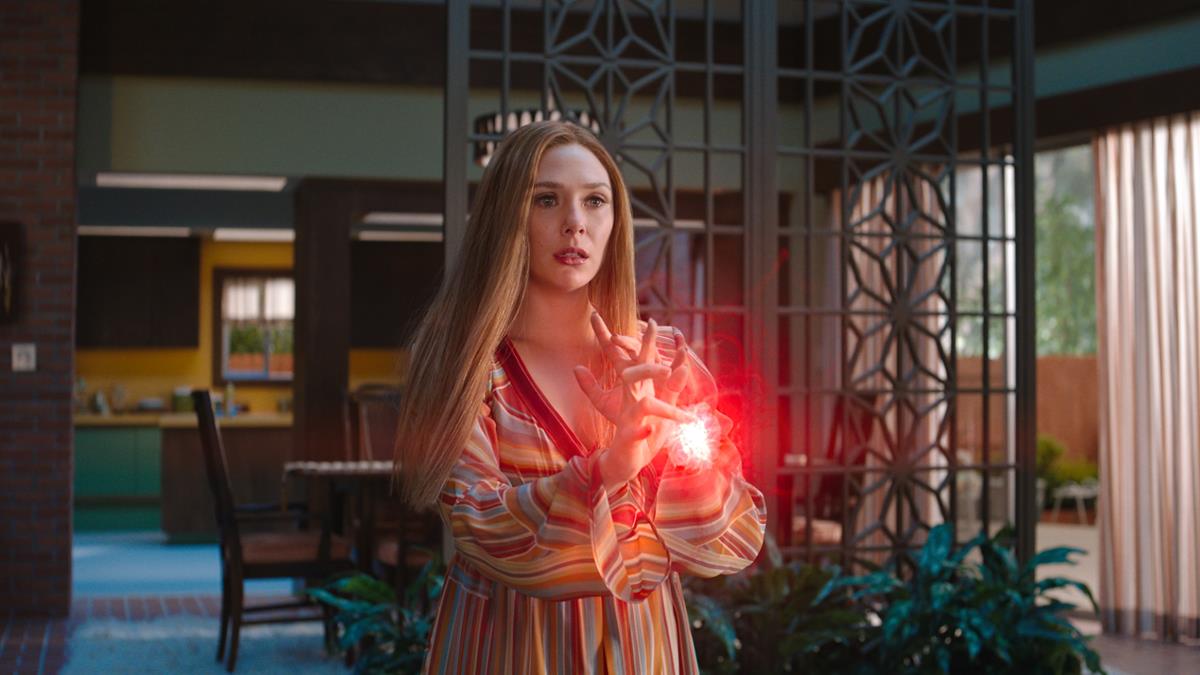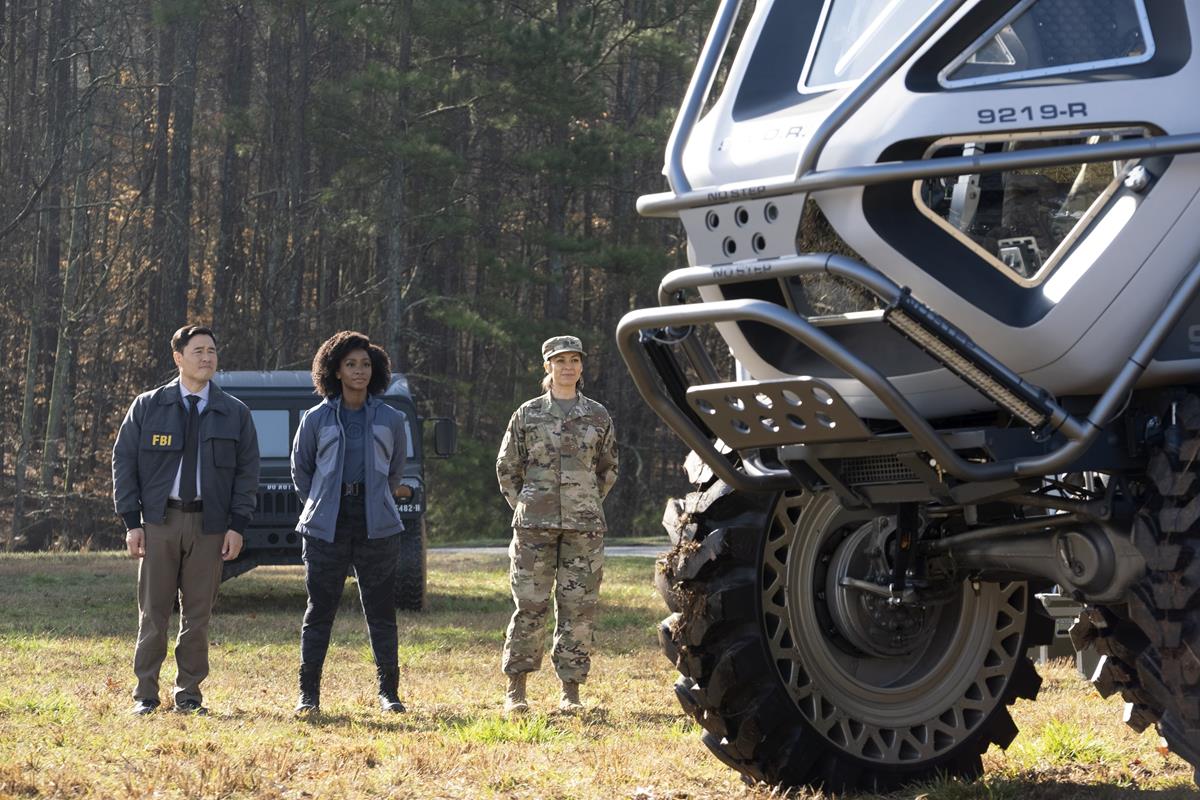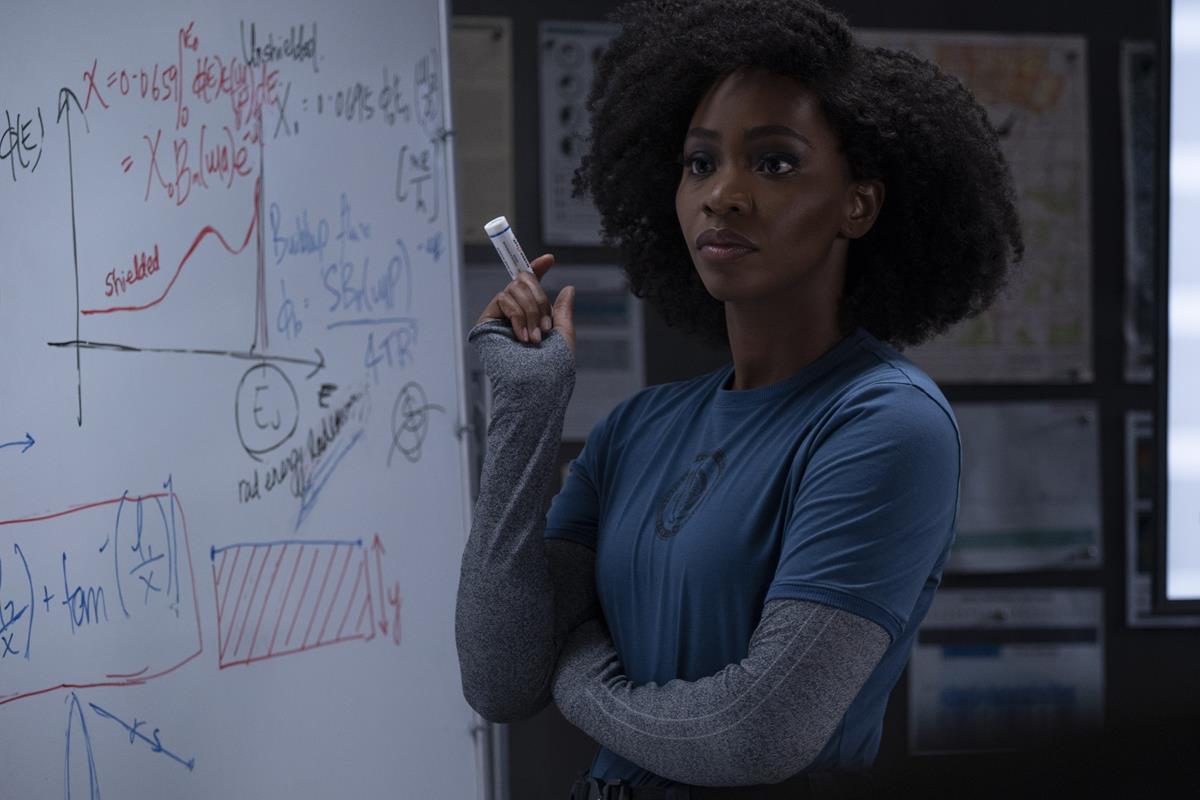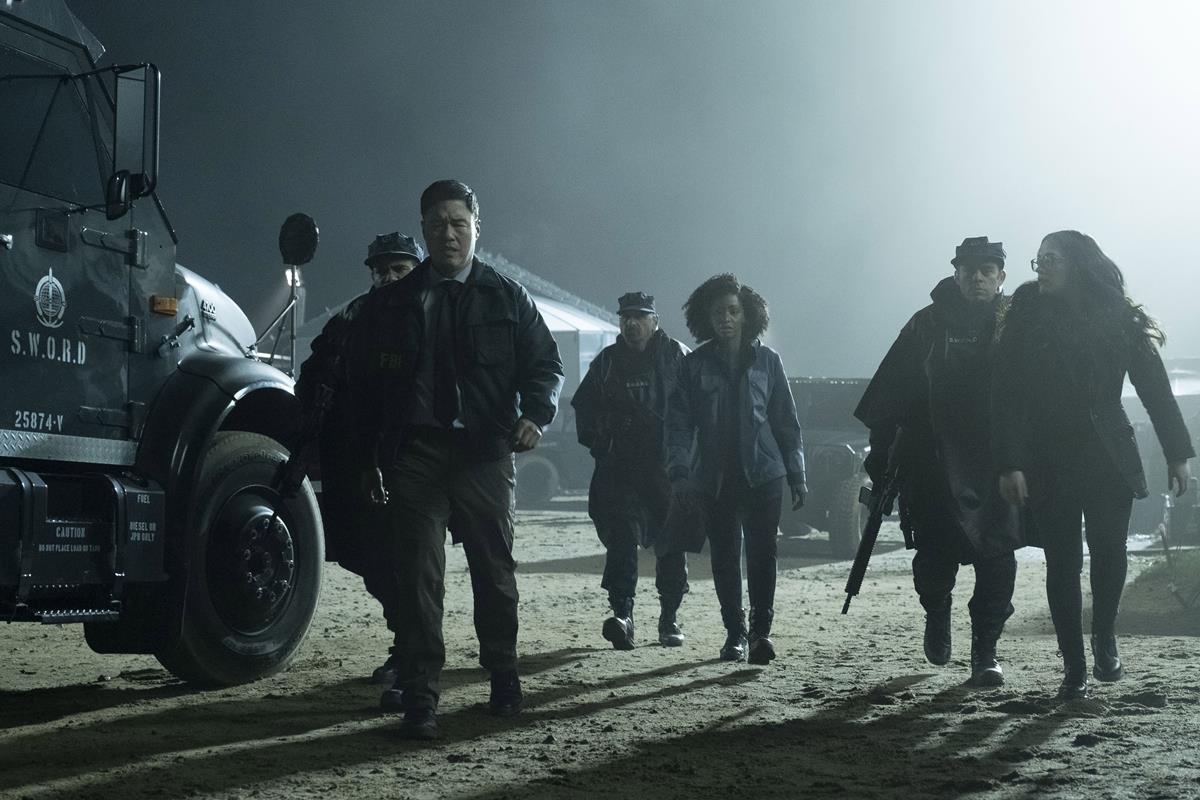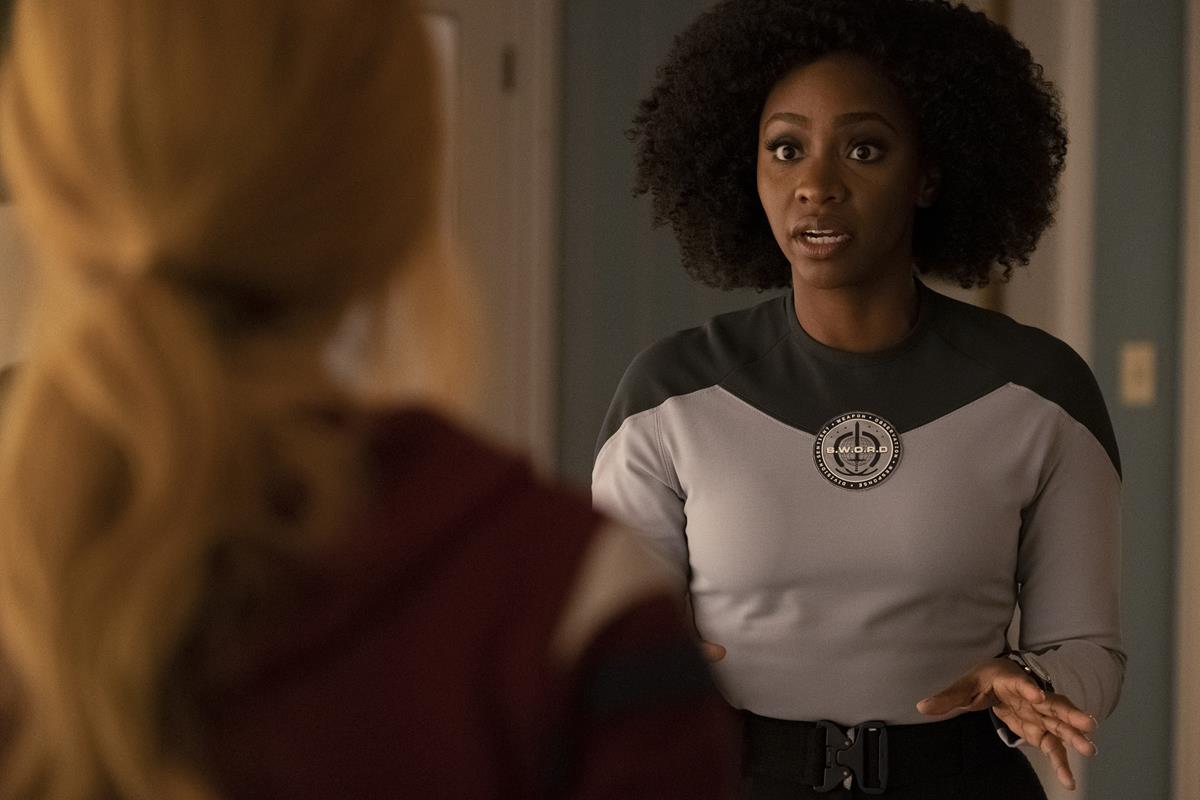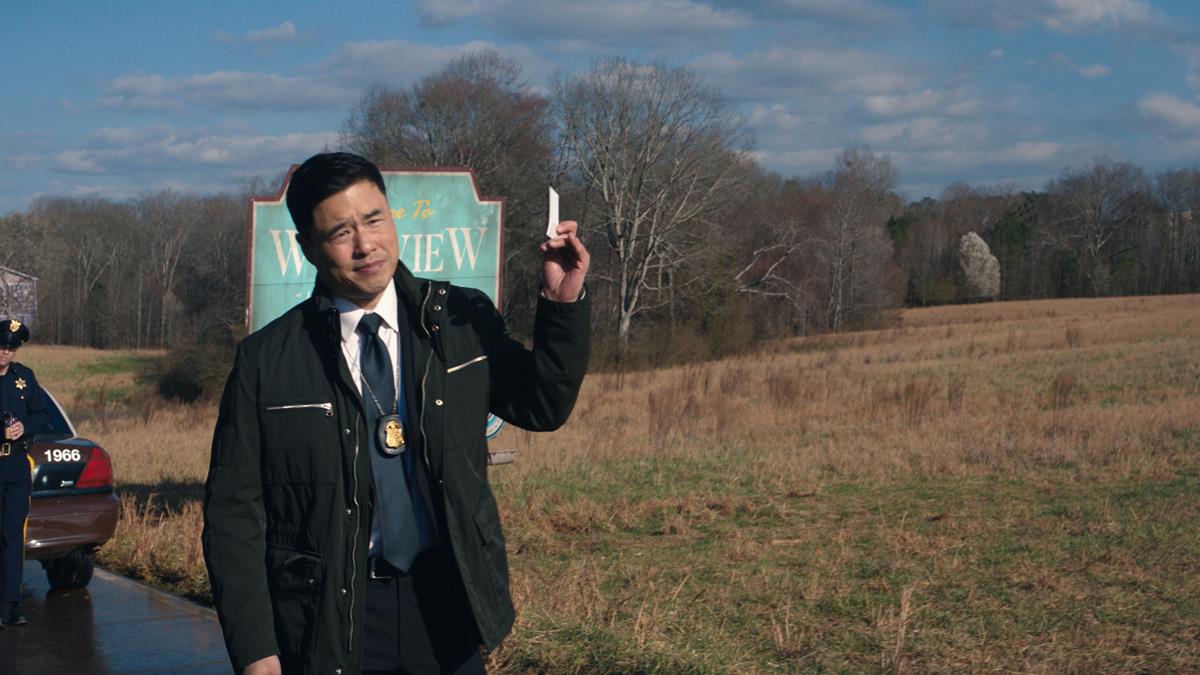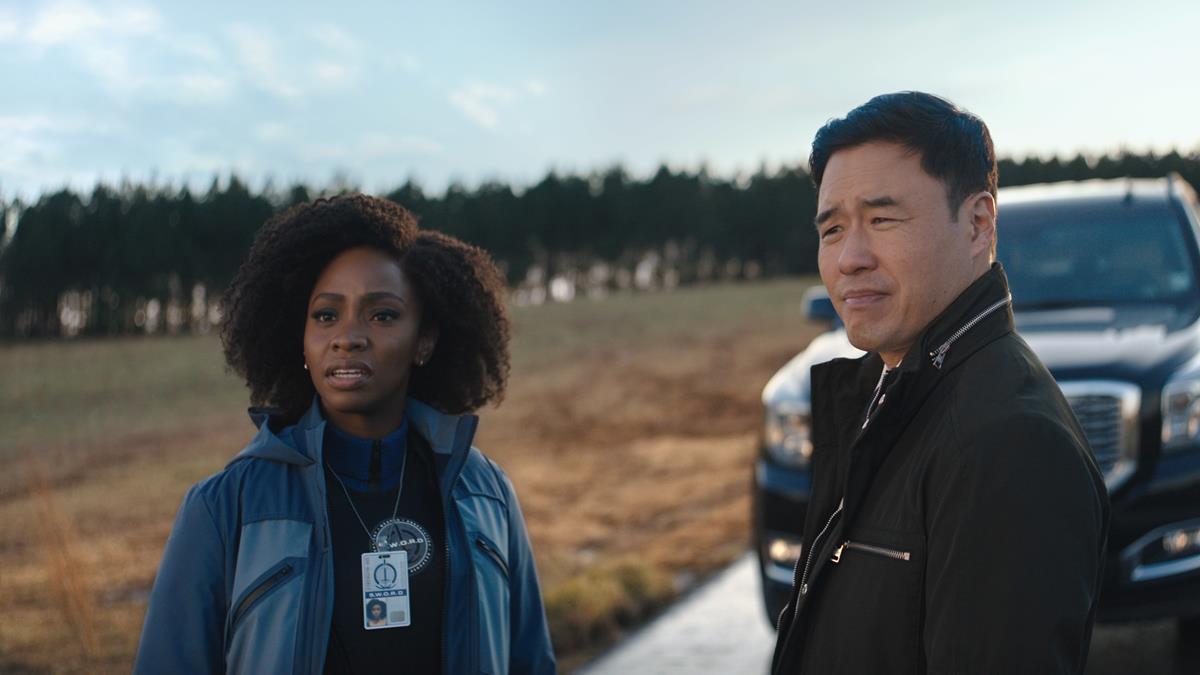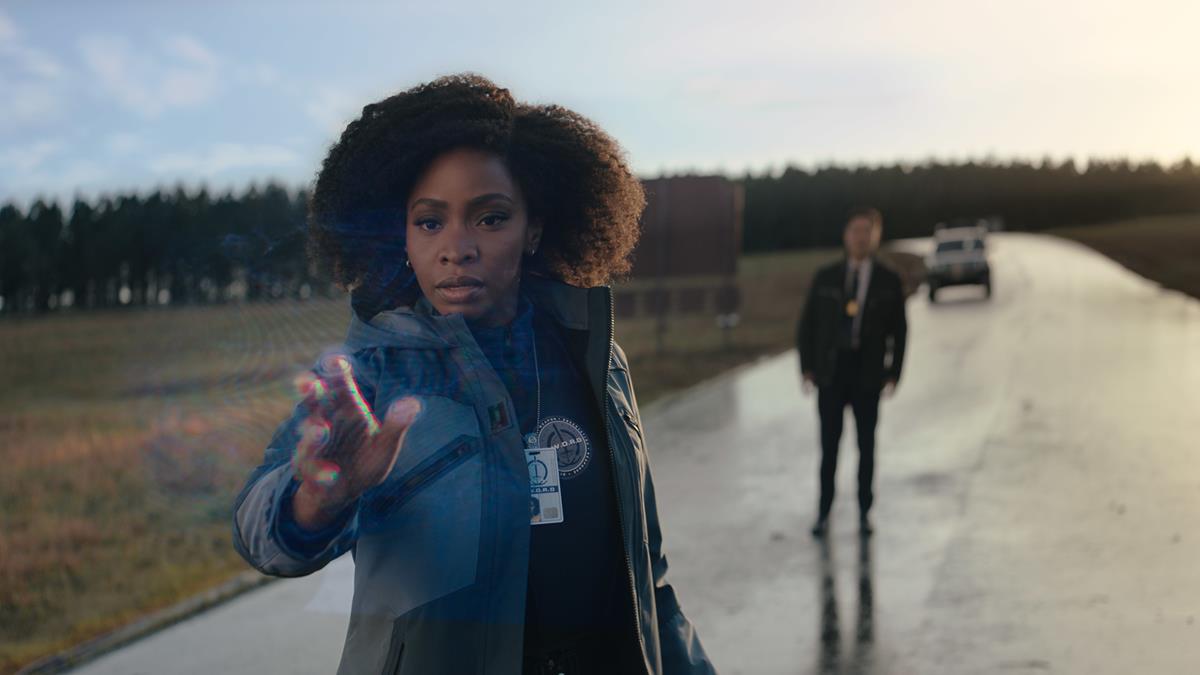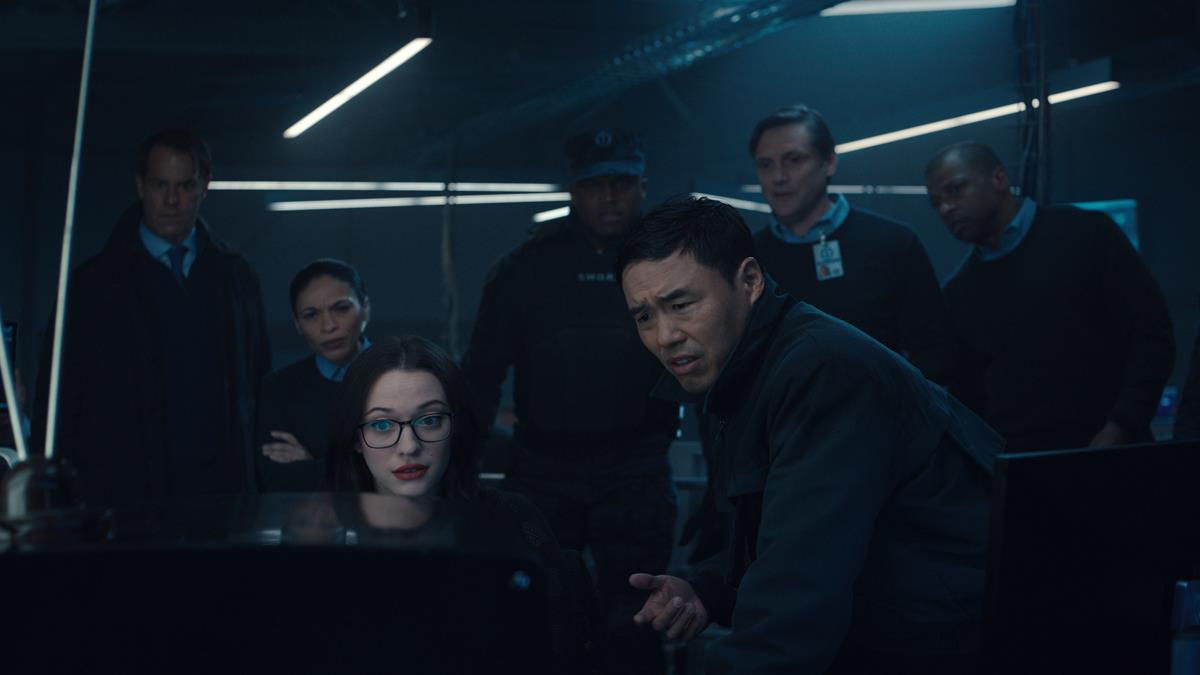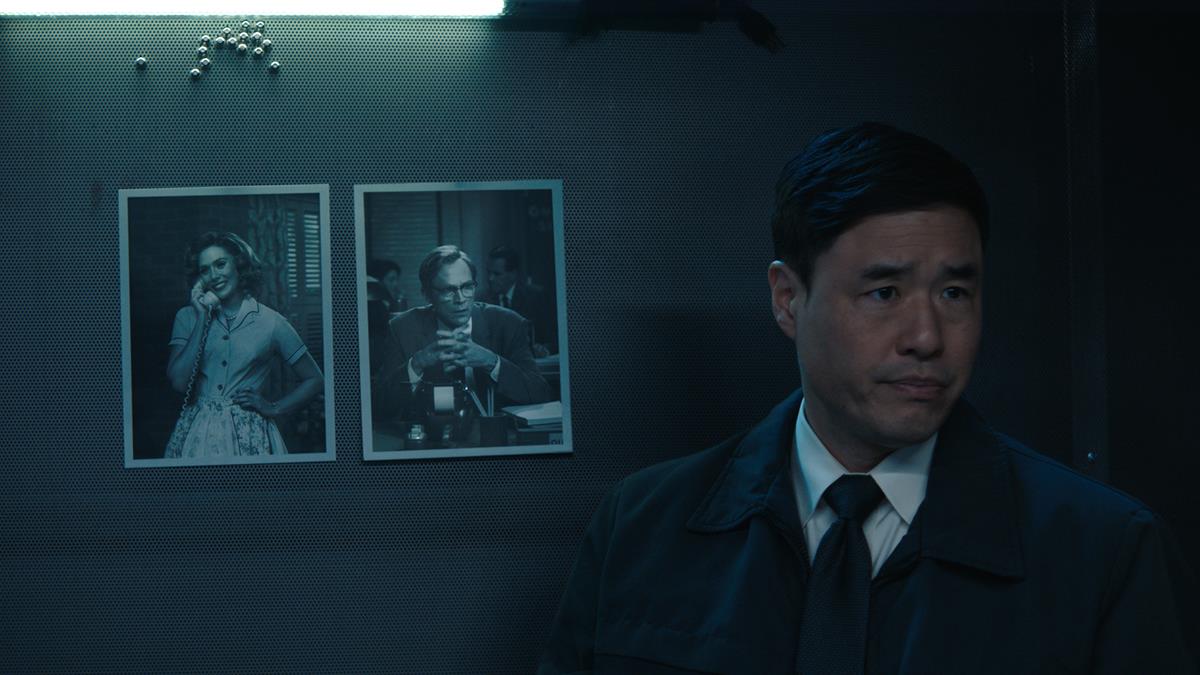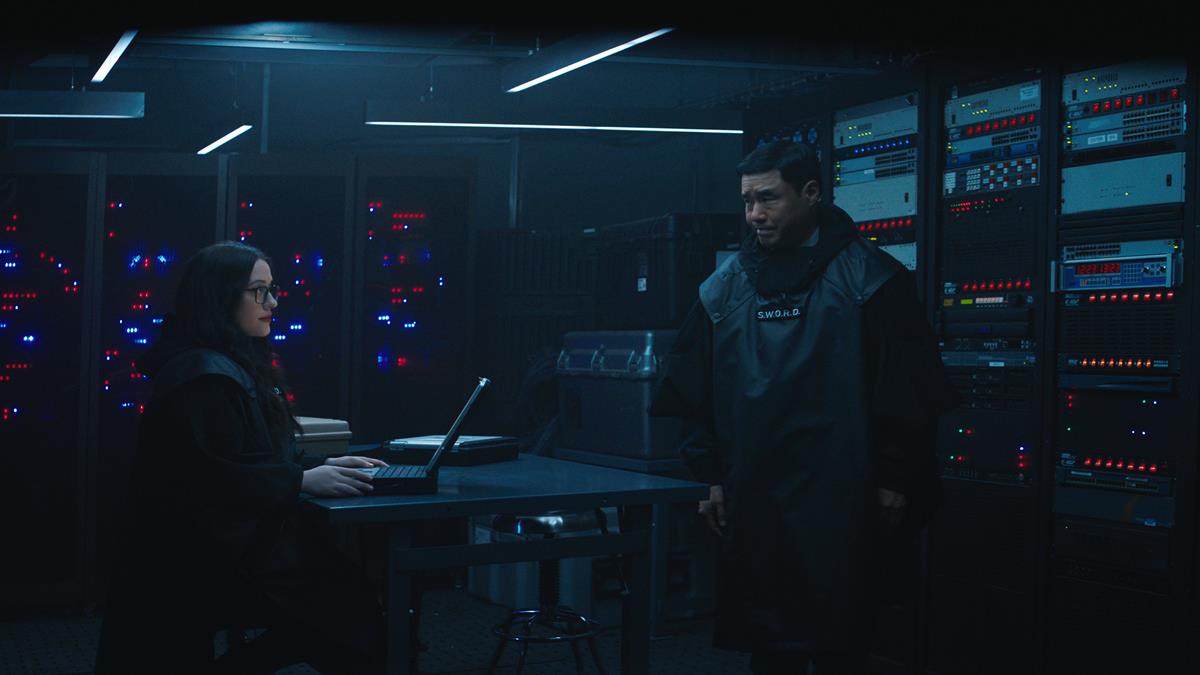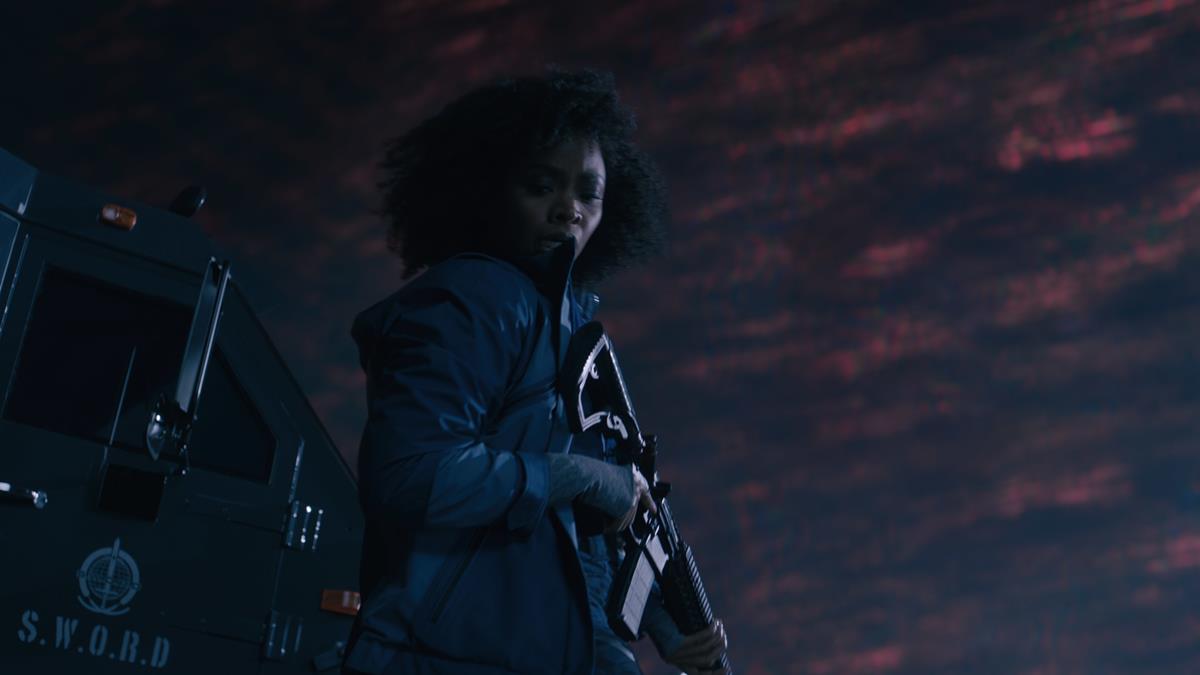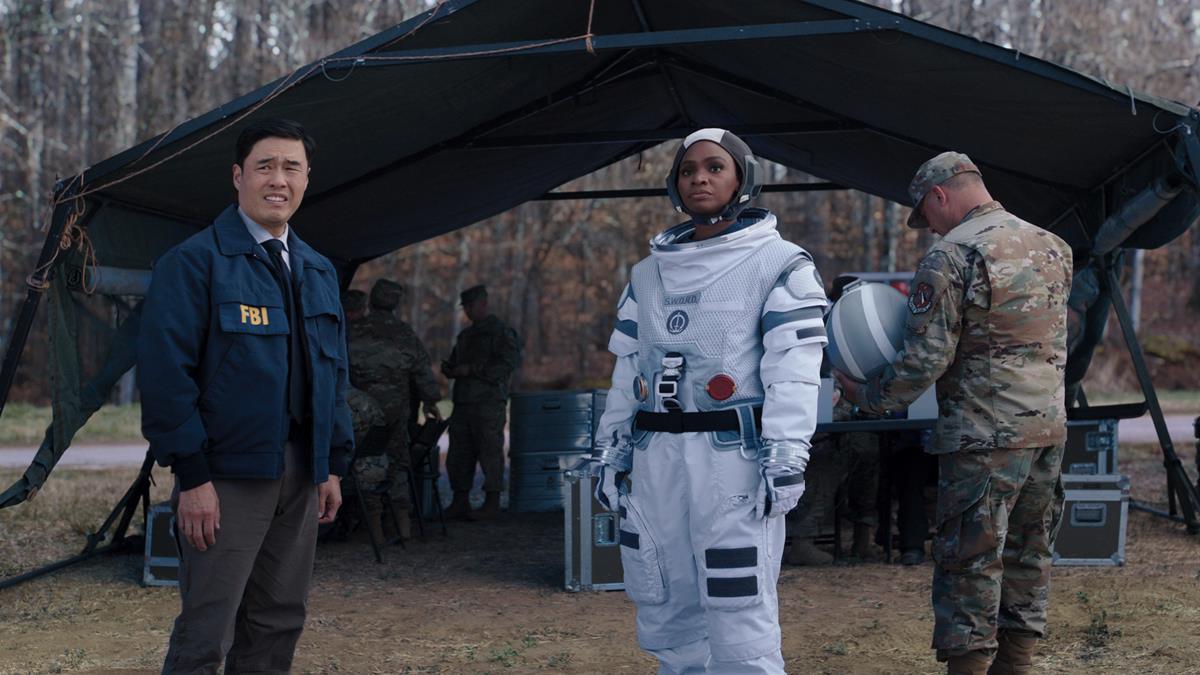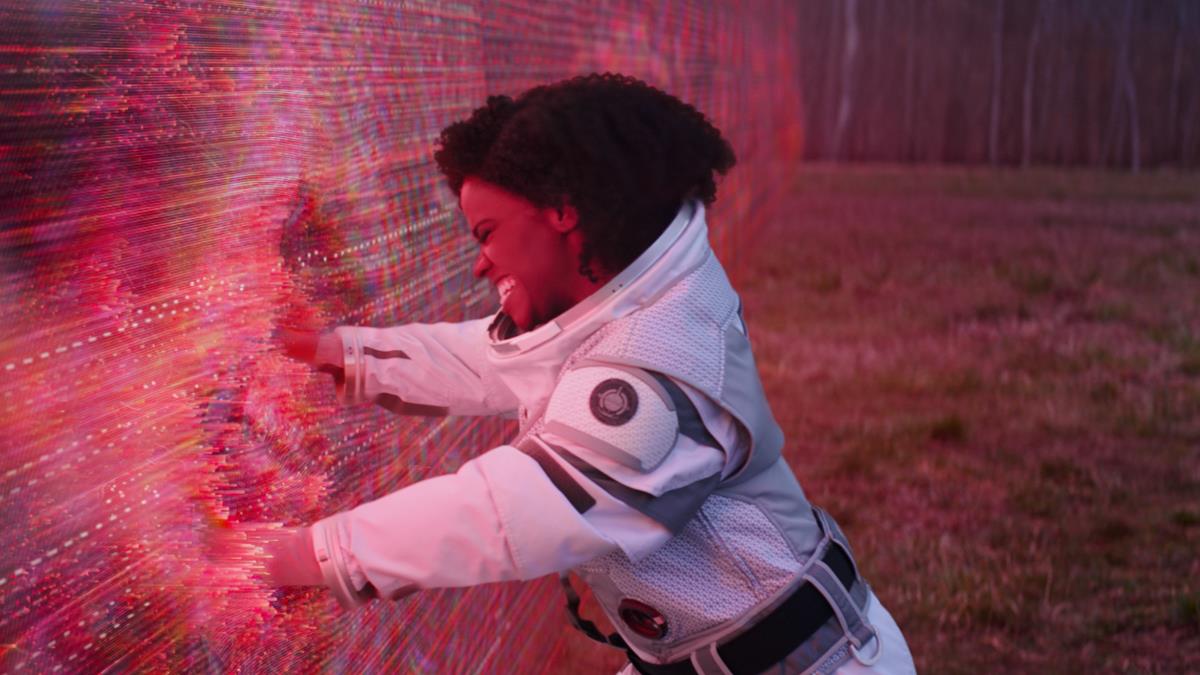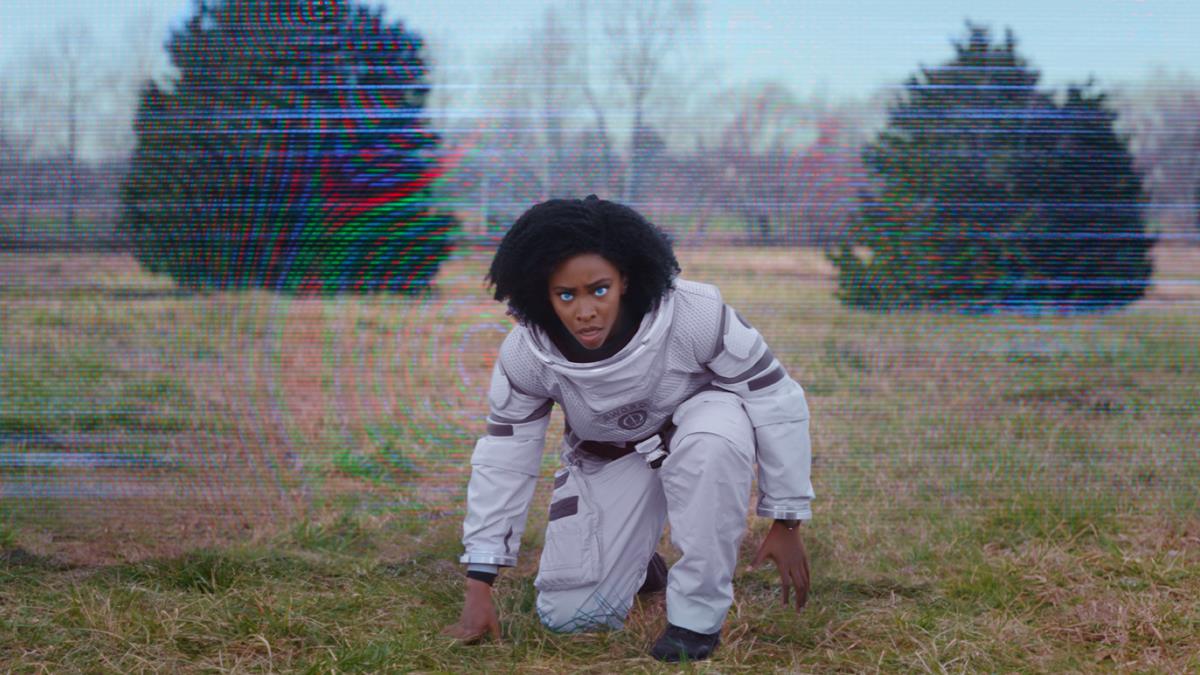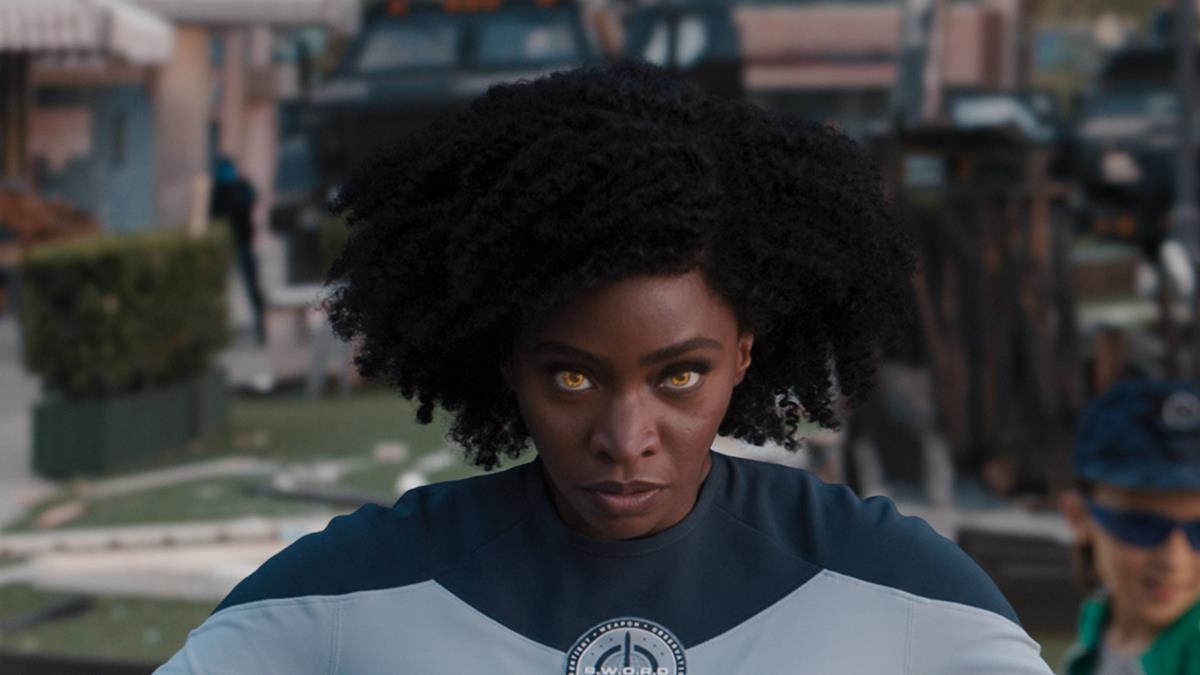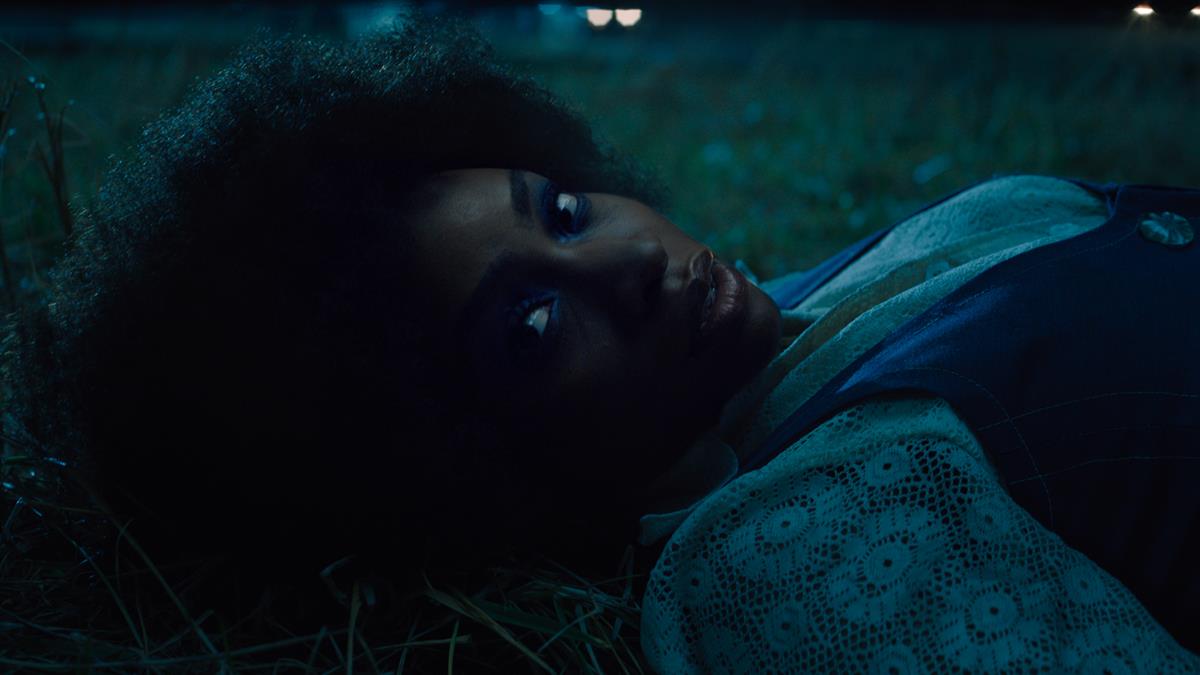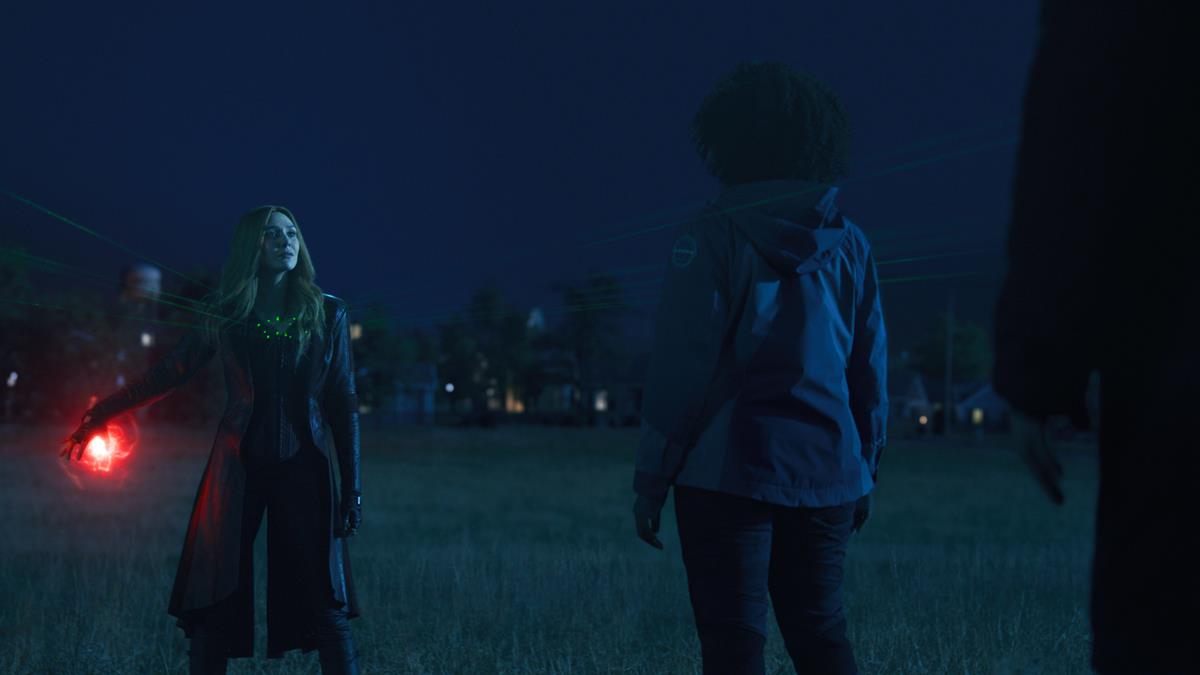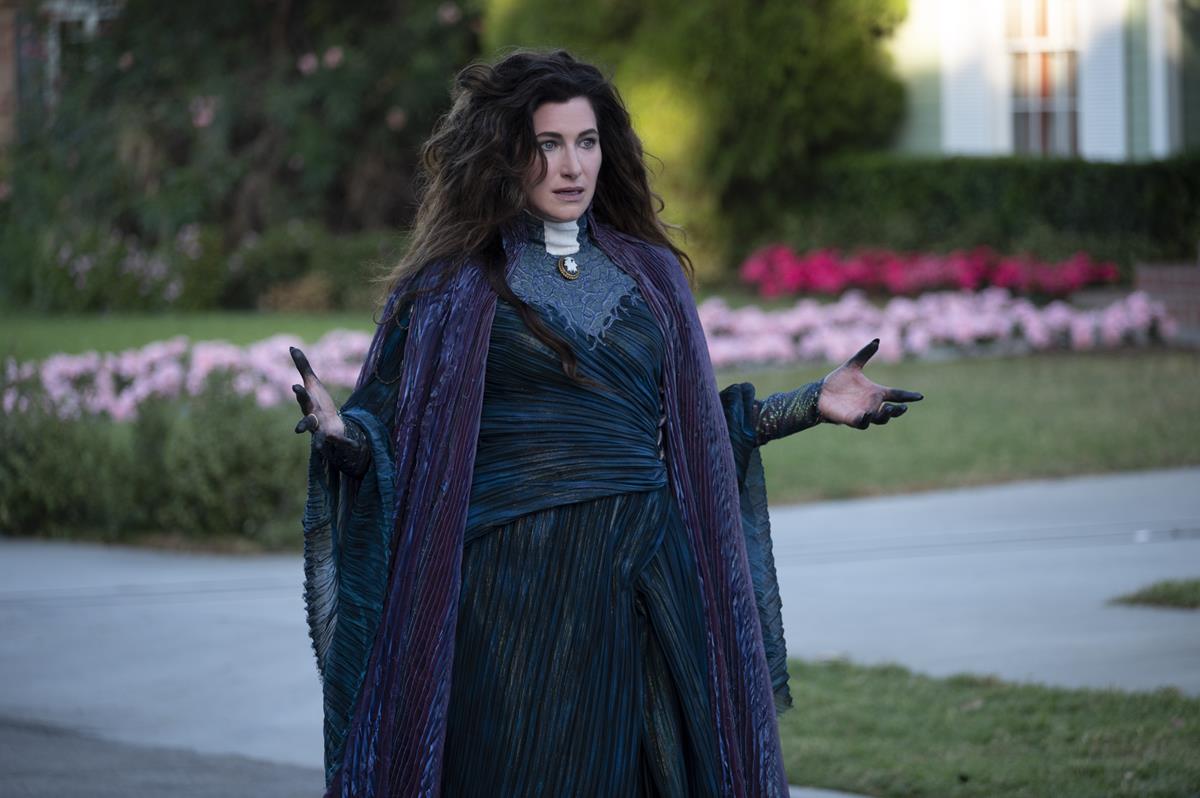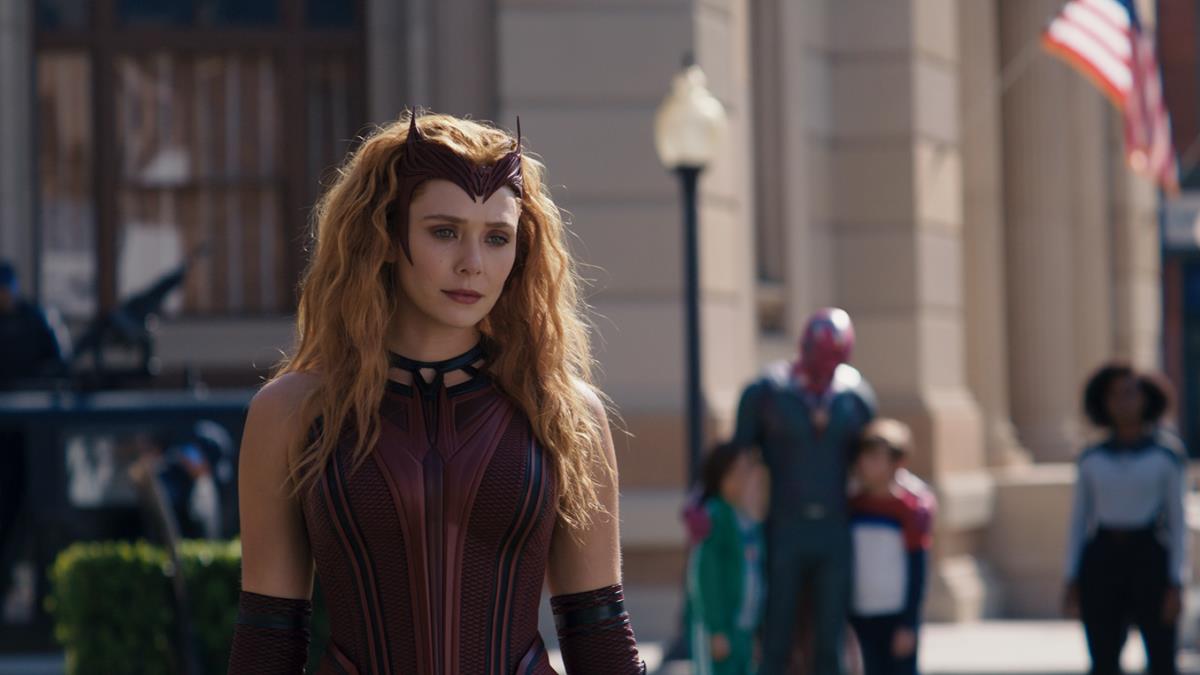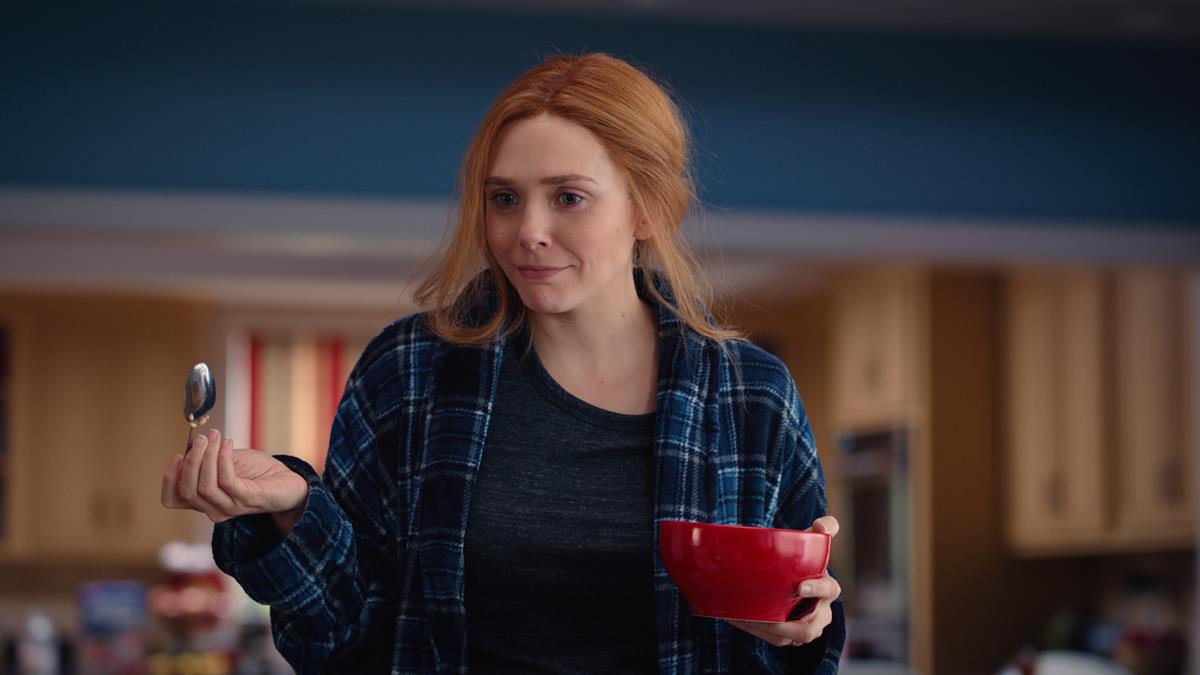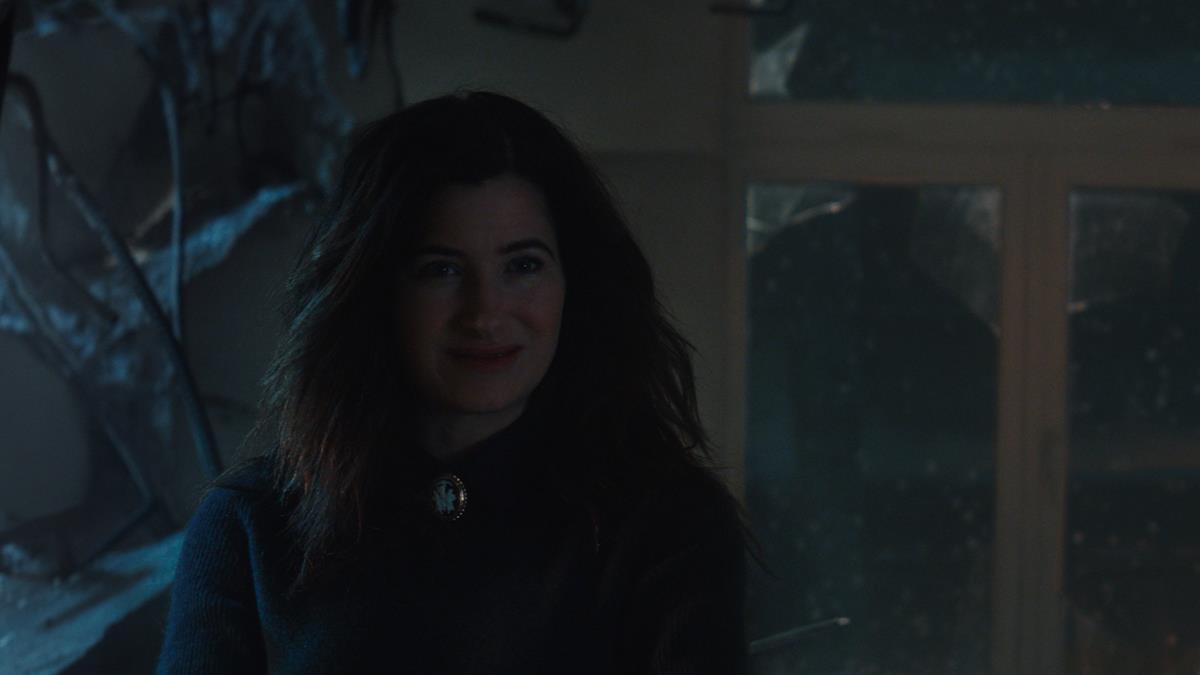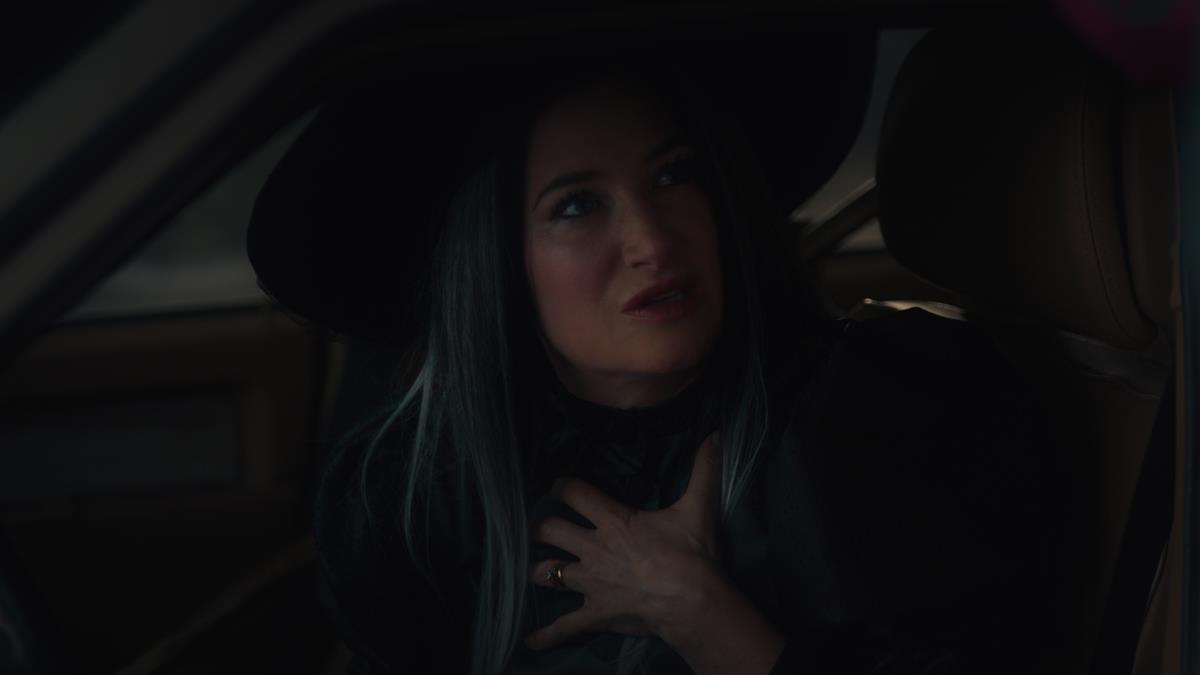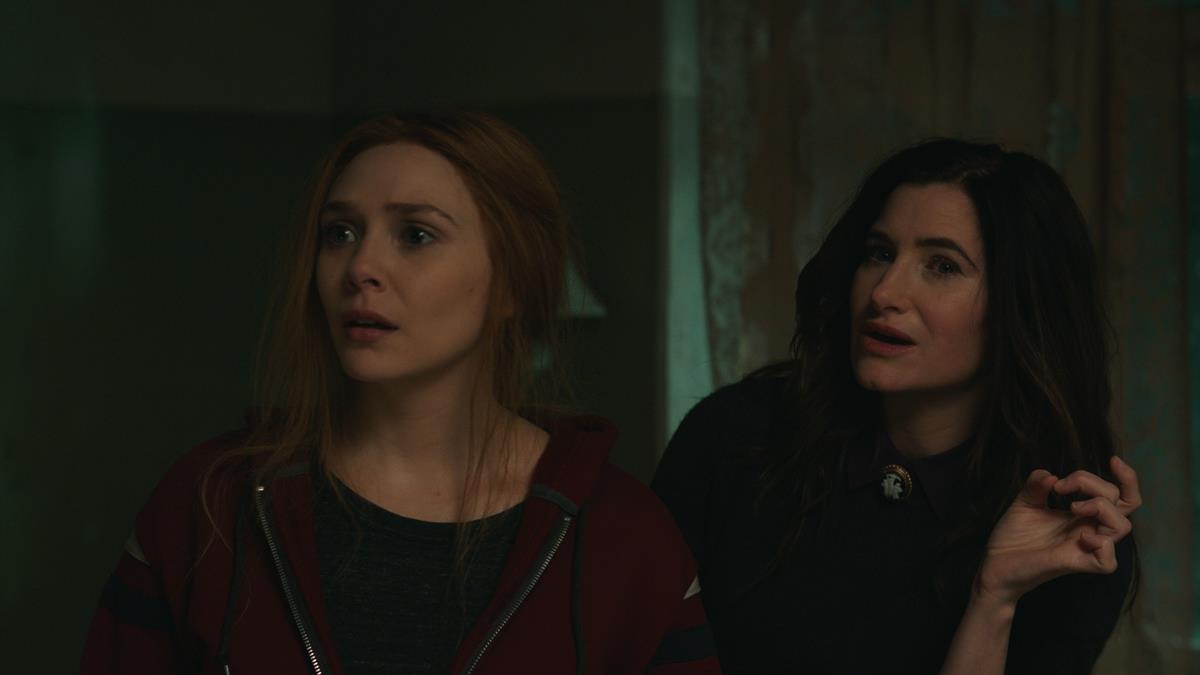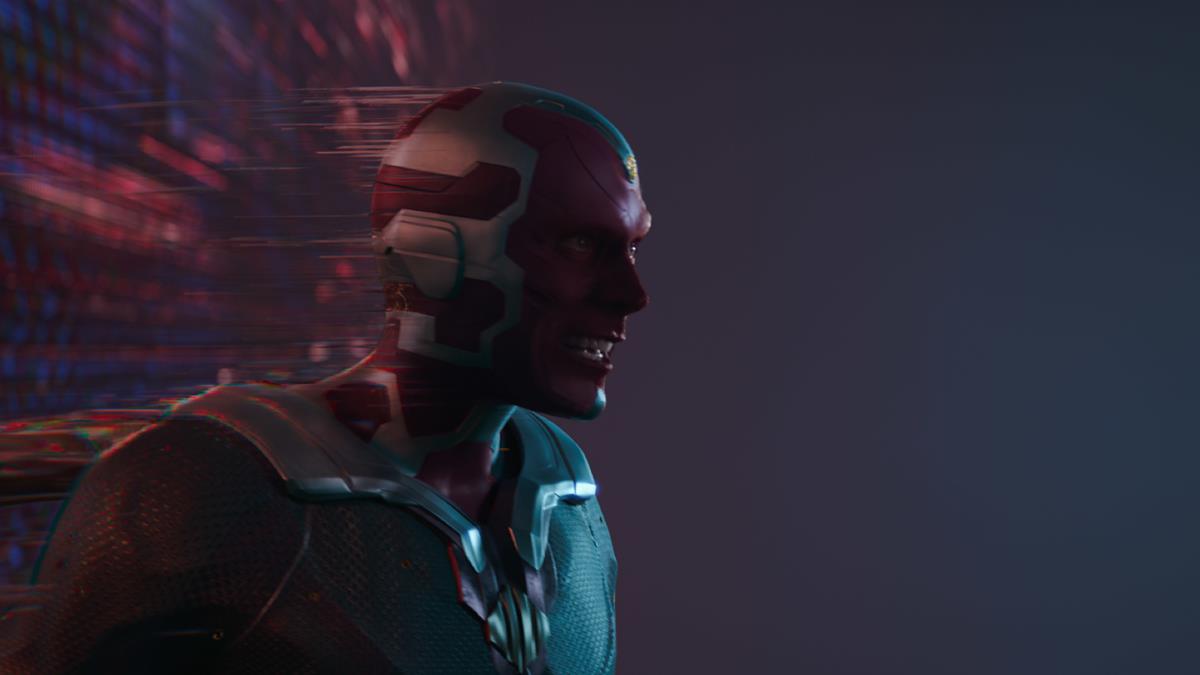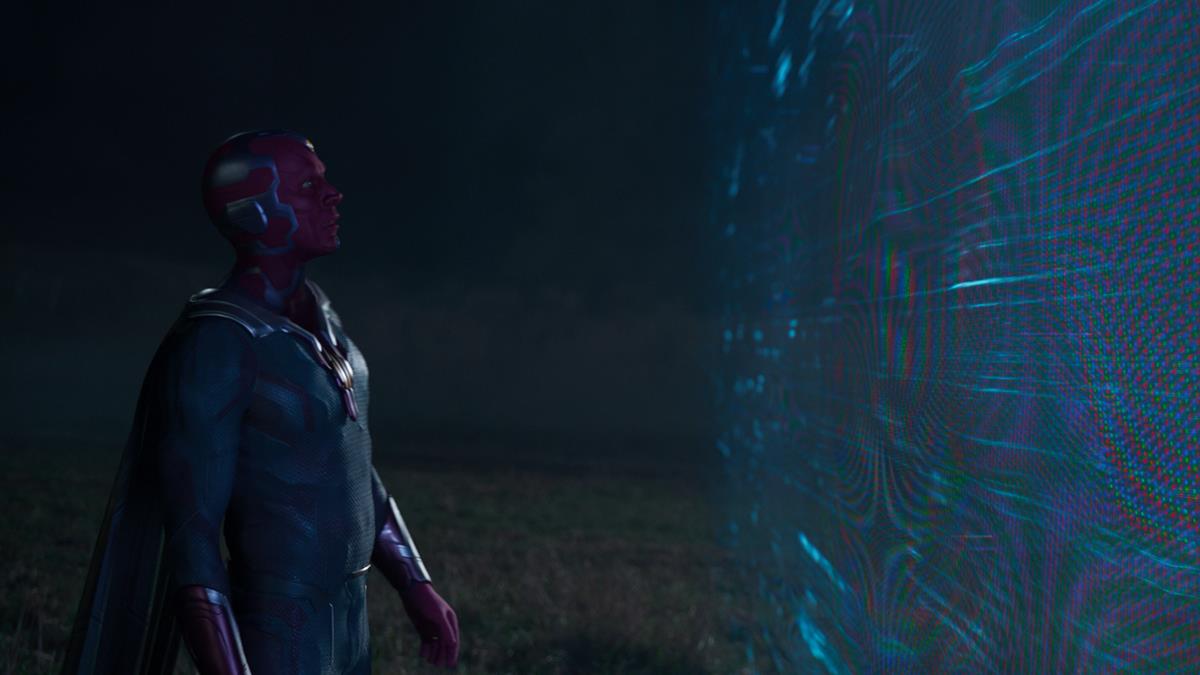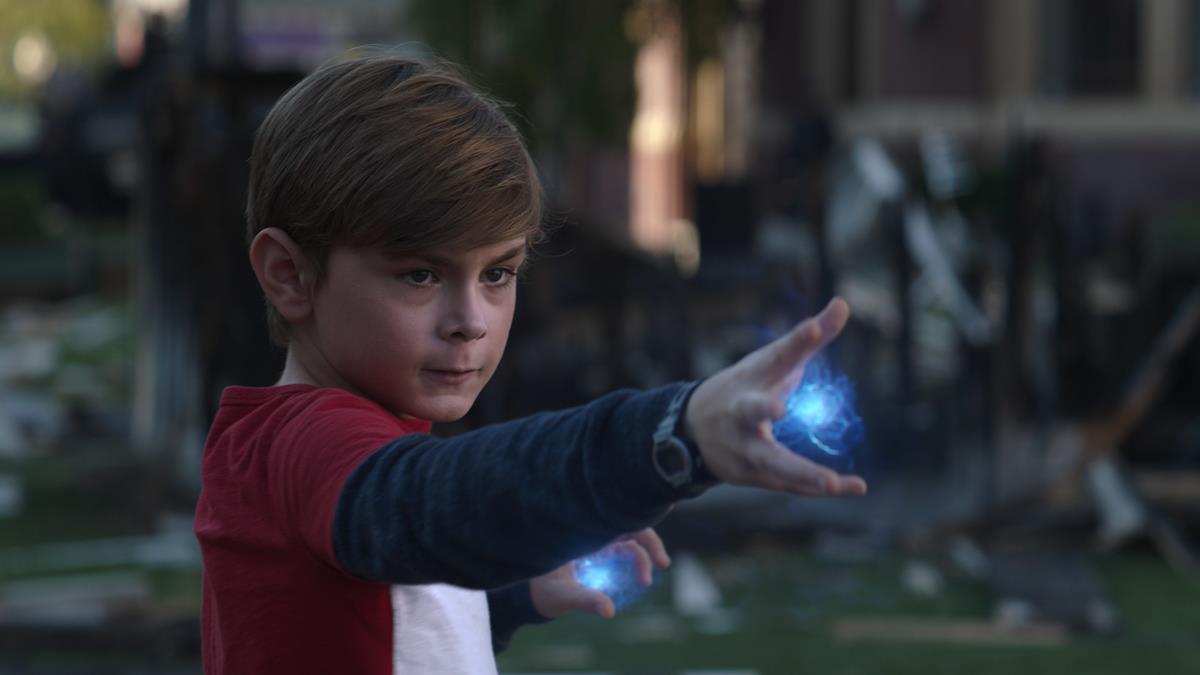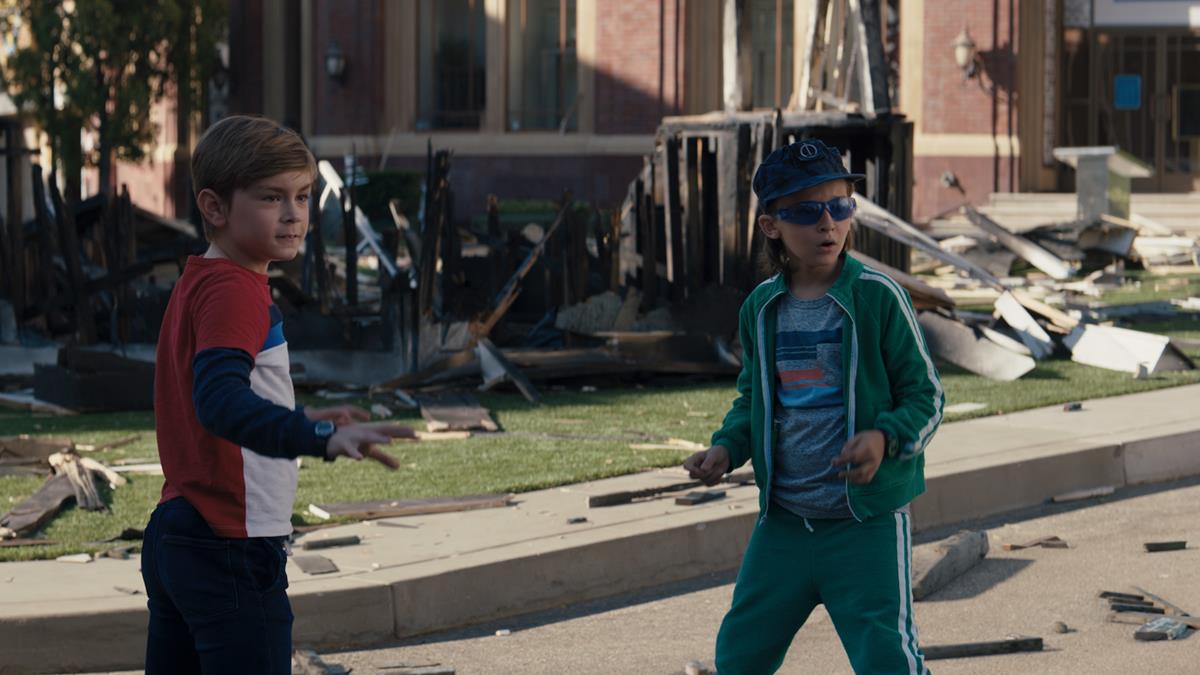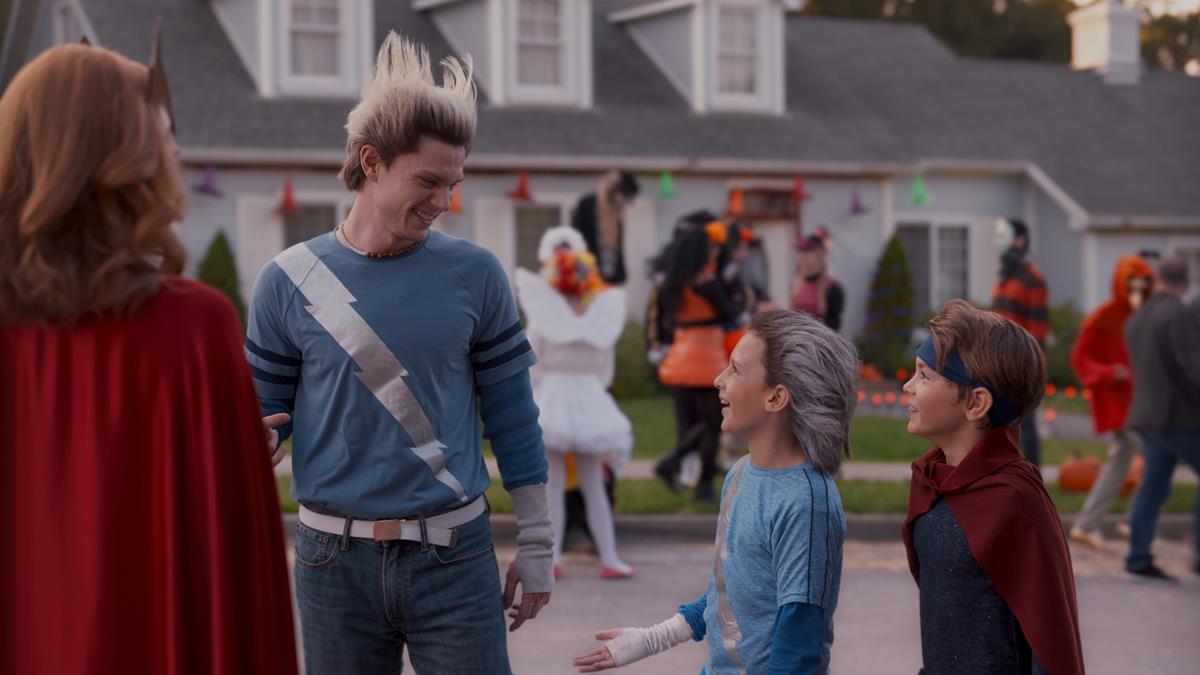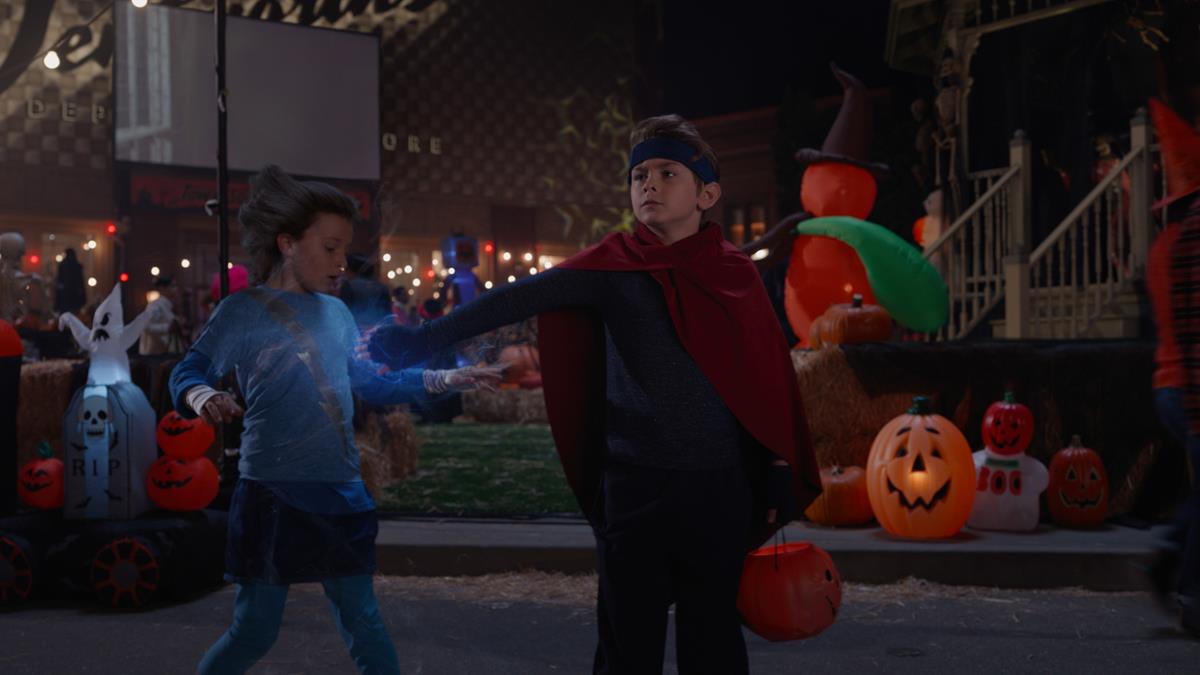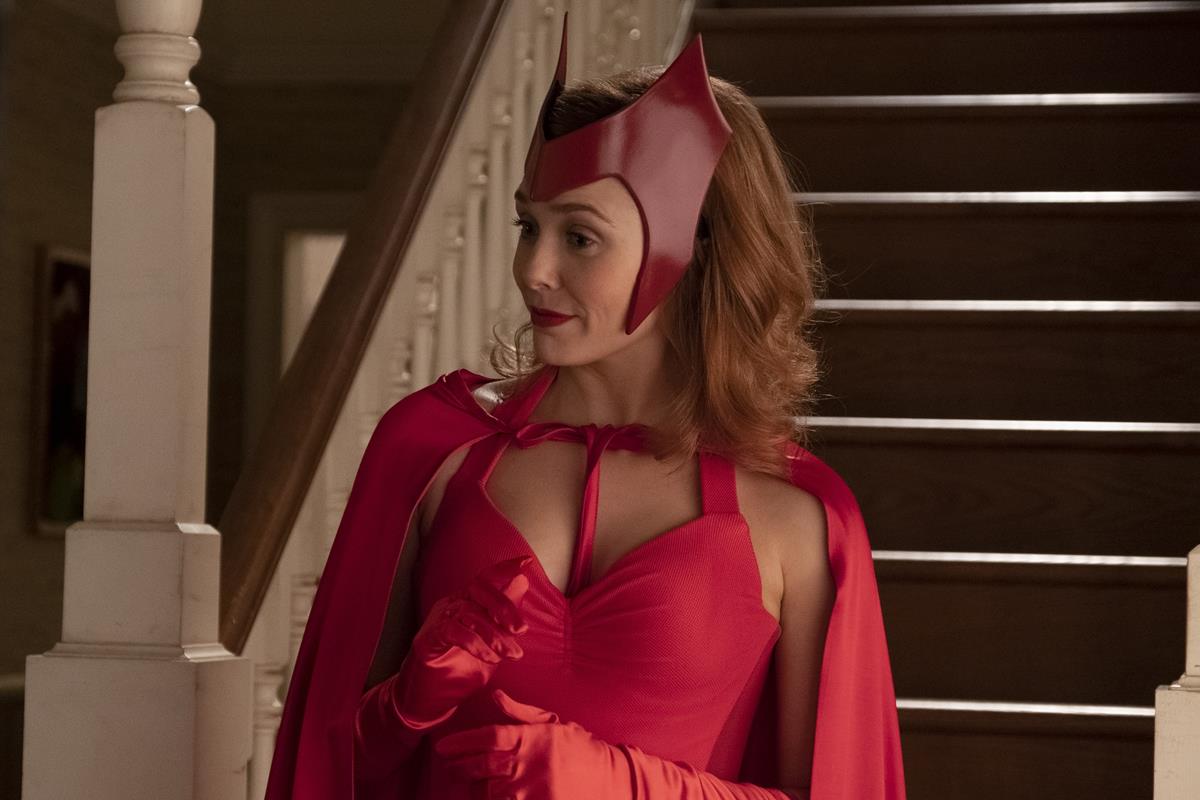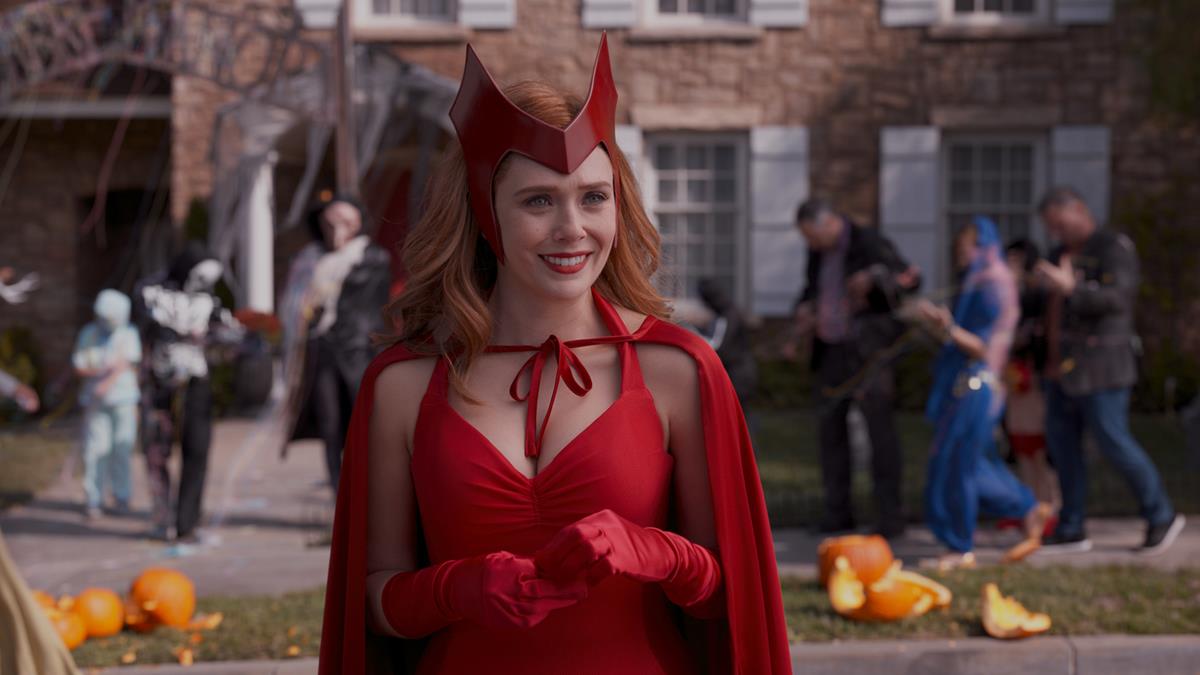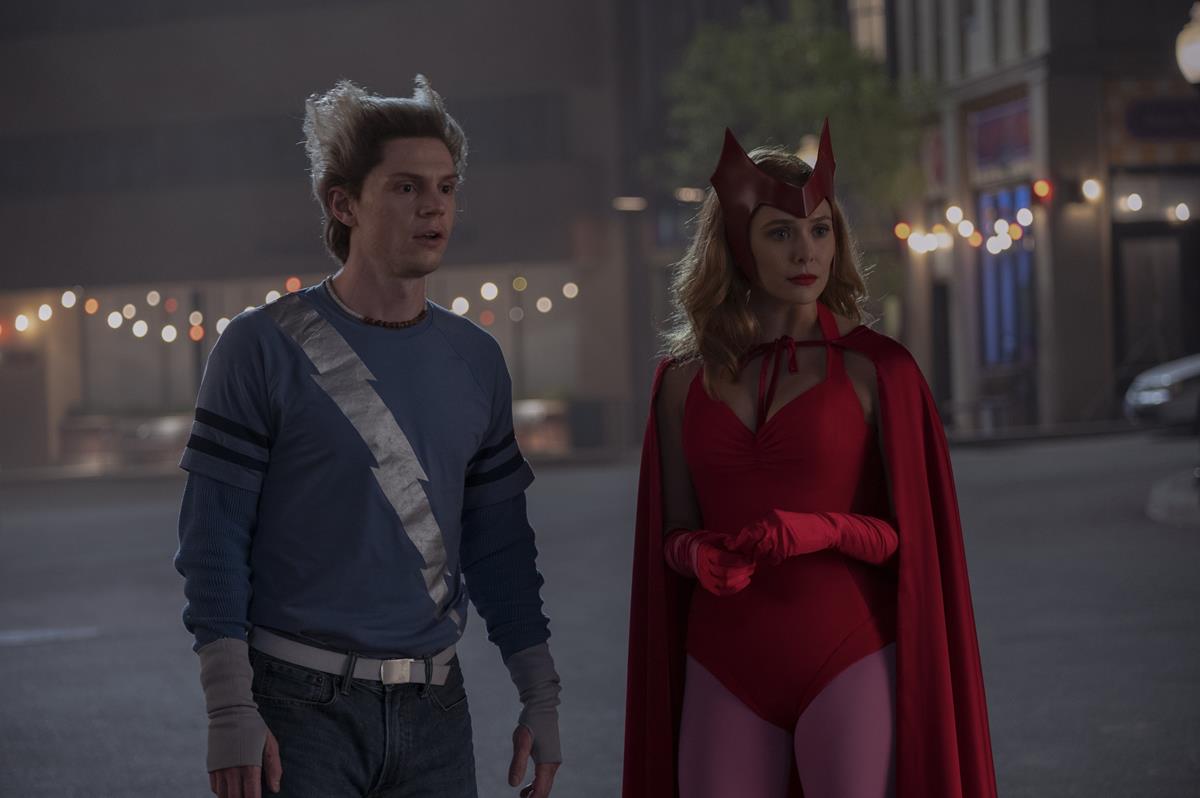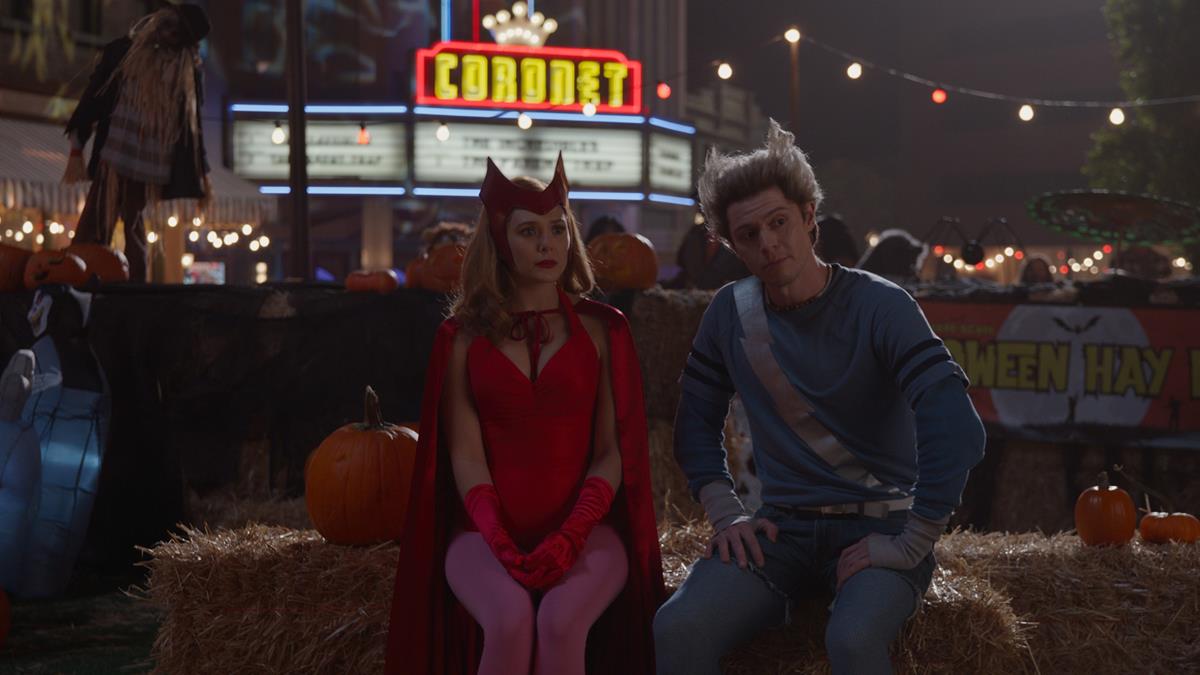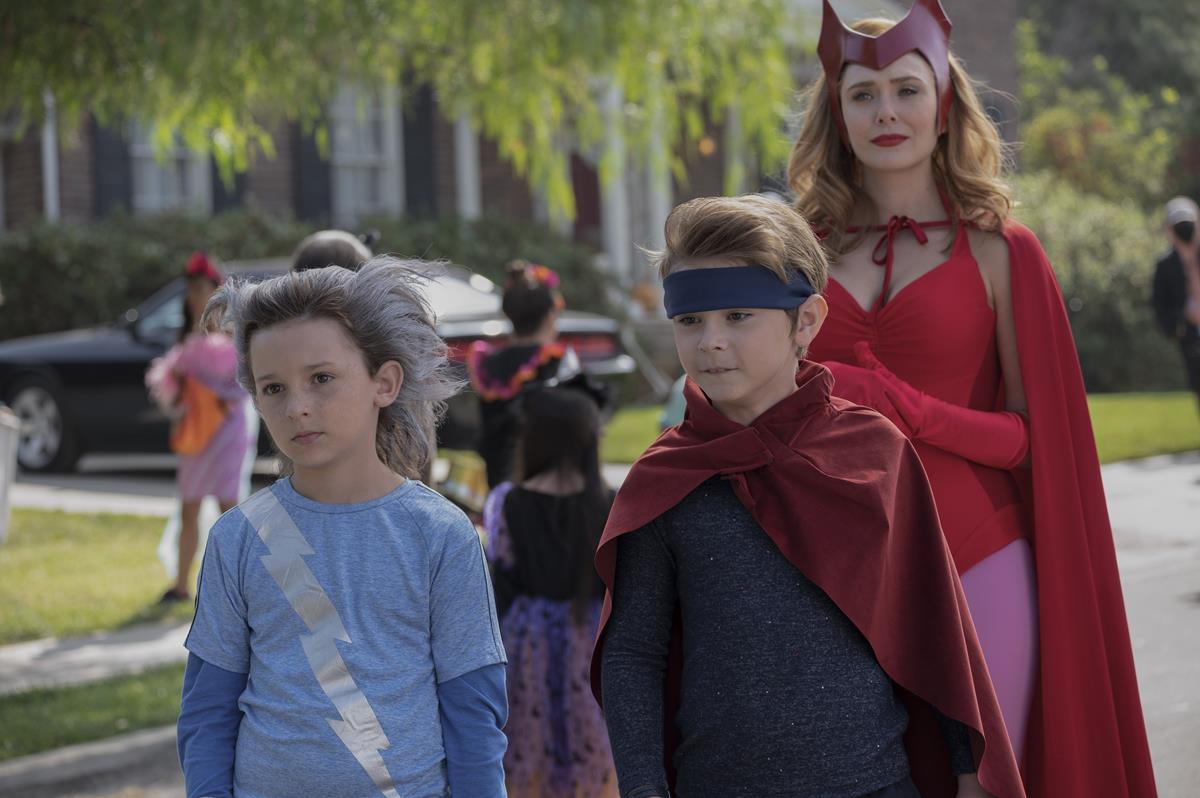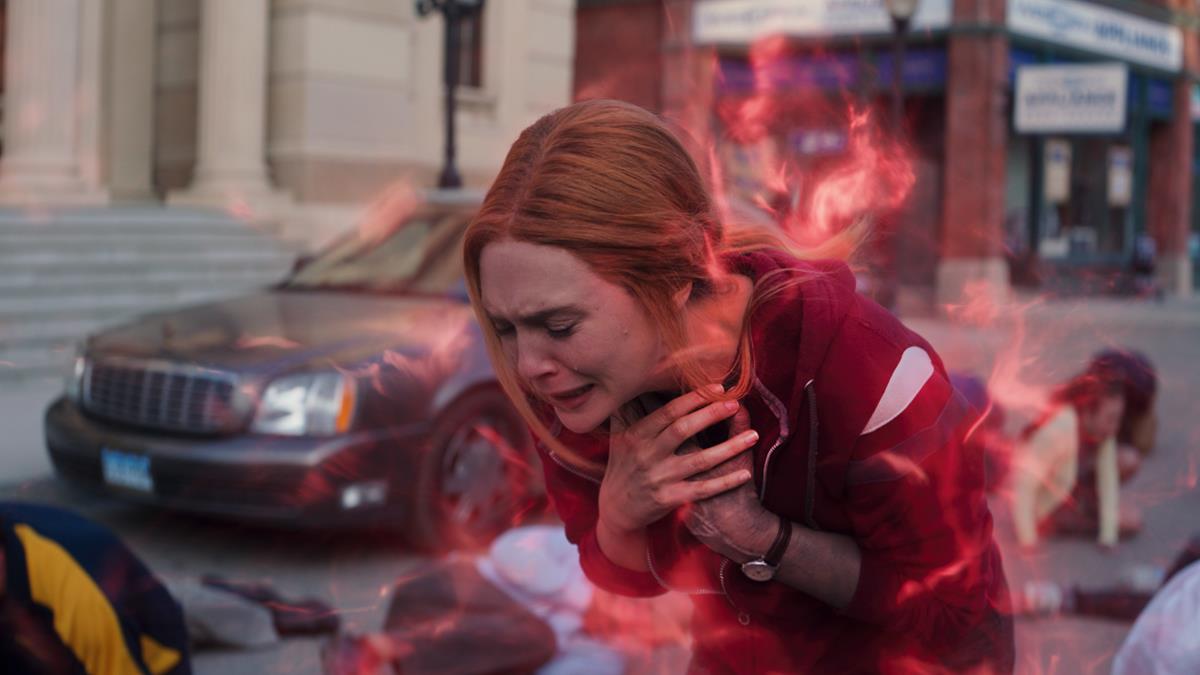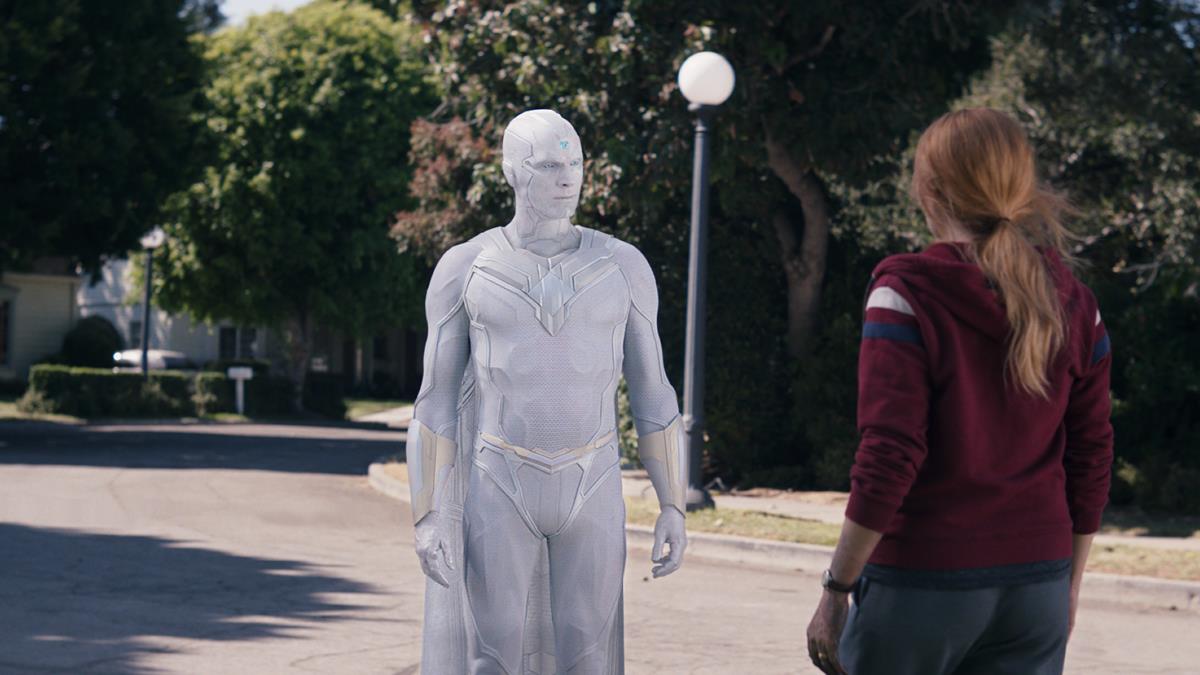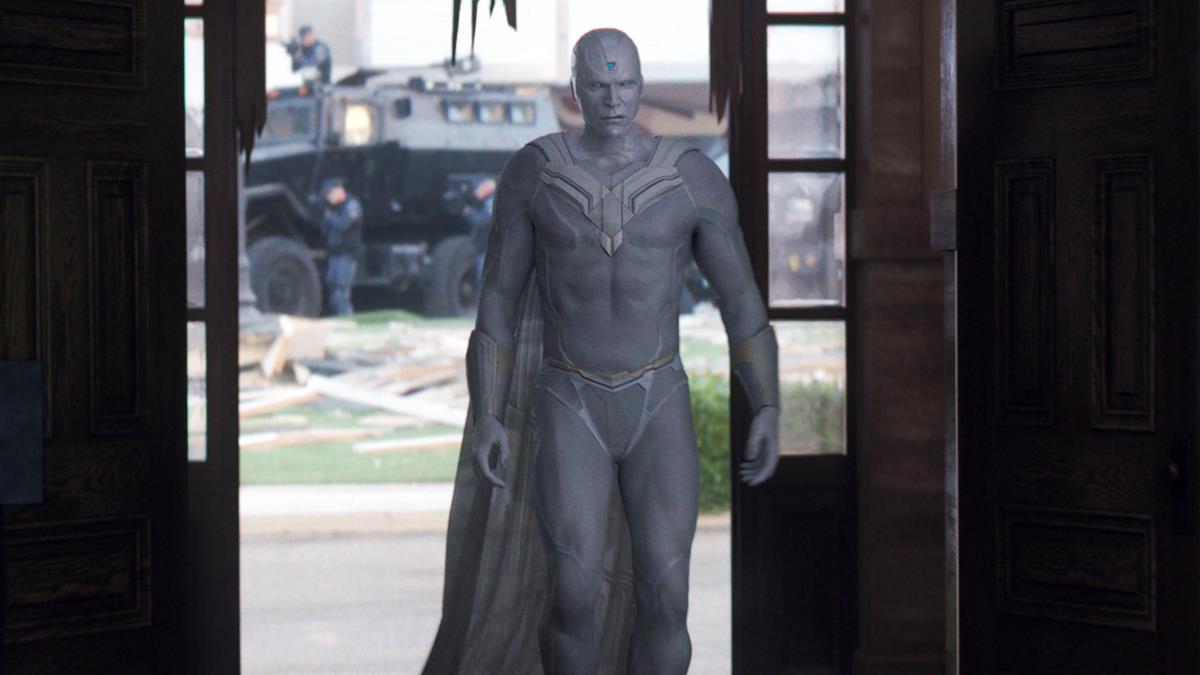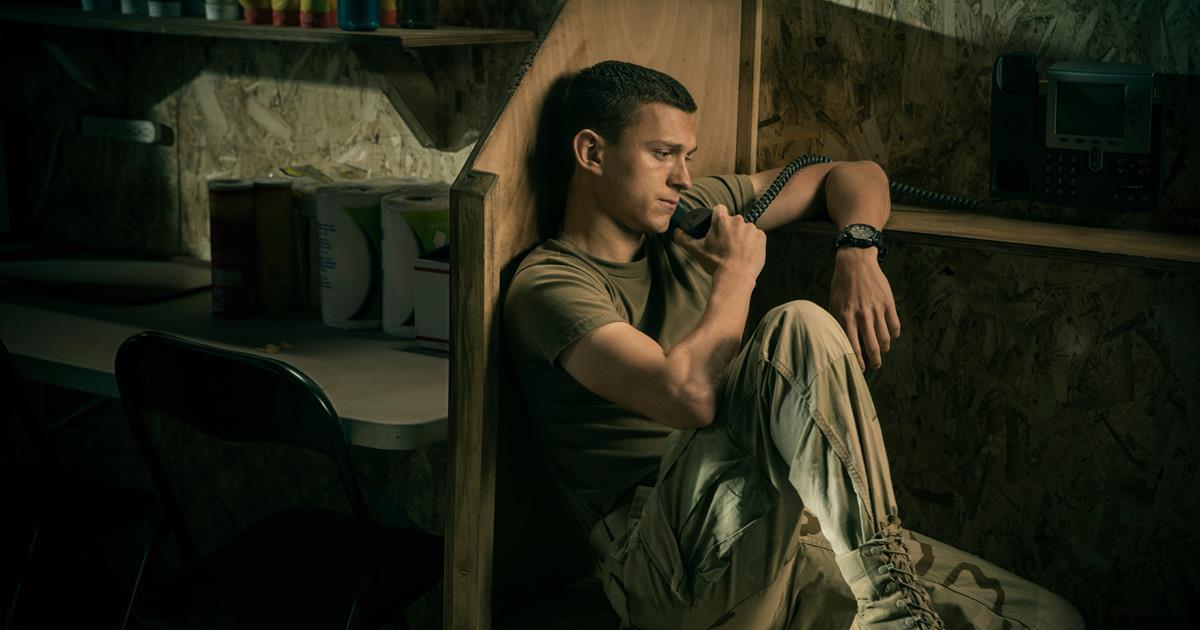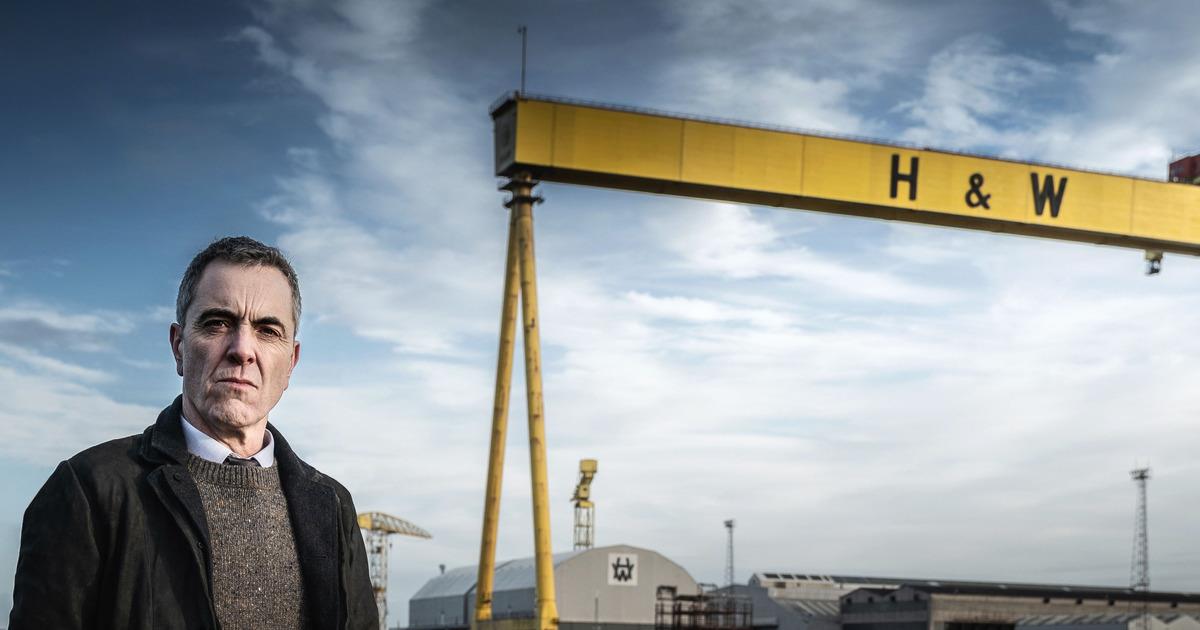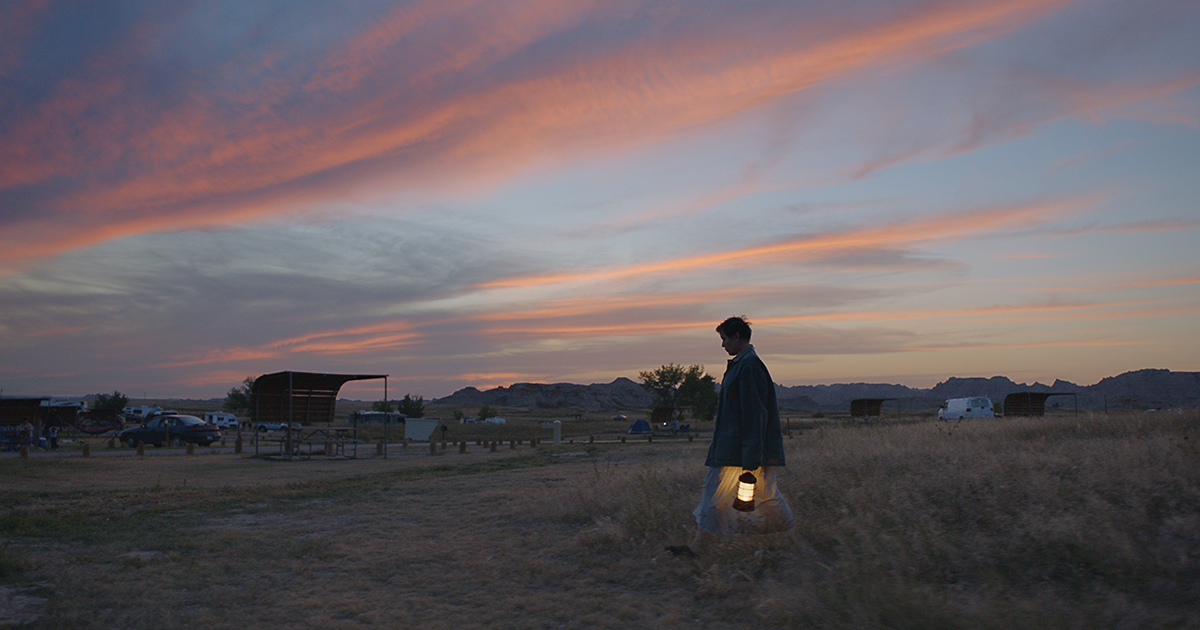Go big or go home. That was the watchword for Marvel Studios’ first foray into television with WandaVision, a sprawling, multi-threaded narrative that pipes the Marvel Cinematic Universe directly into our living room screens. With broad appeal that stretches well beyond the Marvel fan base, WandaVision is unlike anything seen before in the MCU. The nine-episode series, now streaming on Disney+, moves through several decades of American sitcoms, playing with aspect ratio, color, and framing and composition.
Developed by director of photography Jess Hall, ASC, BSC, these iconic looks are juxtaposed against the slick, somewhat moody Marvel aesthetic the MCU is known for. And while there are plenty of twists, turns and Easter eggs to keep fans engaged, “the comic book connectivity isn’t as satisfying as the way the show simultaneously presents a pastiche of television history,” Christopher Campbell writes in a deep dive into the television tropes each episode employs in Film School Rejects: “WandaVision isn’t just casually using beloved sitcoms as a fun backdrop for the story of a grieving superhero who is manipulating reality. The makers of this series…genuinely love and understand the tropes and trends of popular television over the course of sixty-plus years.”
READ MORE: The Perfect Pastiche of TV Tropes and Trends in WandaVision (Film School Rejects)
Hall, who is known for his work on Edgar Wright’s action-comedy Hot Fuzz and the live-action sci-fi Ghost in the Shell directed by Rupert Sanders, closely examined television history for the project. “The approach in essence was to study and absorb the references of each period, to distill their technical and aesthetic choices and then to selectively apply and to filter these within our own stylistic sensibility,” he says. “The objective is to create images that were in a sense truly post-modern, not simply an homage to the past. This is what the complex narrative of WandaVision demanded.”
Hall employed 47 different lenses to create seven different periods — many of them custom-modified to render specific period characteristics. “For the 1950s, I tested lenses of the actual period and then modified modern lenses to selectively render the characteristics that I liked — it was never a case of simply copying what had been done before.”
In terms of lighting, Hall utilized a carefully crafted lighting style, as well as lighting instruments that were period appropriate. “This meant delving deep into the archives of several studio equipment houses to source equipment that has become almost obsolete,” he says. “The 1950-1970s episodes are shot almost entirely with period tungsten lighting. LED lighting doesn’t make an appearance until the later episodes that are situated in the 2000s, which is in the correct time line for when this equipment entered the filmmaking vocabulary.”
Hall also studied and incorporated specific composition and camera movement to convey the various periods, adopting specific camera approaches to episodes, depending on what the period’s sitcoms tended to utilize. “However,” he says, “I like to think that WandaVision has a unique quality and that in a certain sense its look is original, a visual synthesis that has transcended the cut and mix.”
The nine episodic scripts for WandaVision called for seven separate looks delivered on a television production schedule, an enormous task for Hall to carry out. Early in pre-production he sought an approach that would help simplify the work ahead of him. “It was overwhelming,” he commented to Brad Gullickson in an interview for Film School Rejects. “When you’re working on a production, it’s busy. You don’t want too many elements,” he explained. “I didn’t want a bunch of vintage cameras that we’re going to break down in the heat or the rain. It had to have a bulletproof and efficient system. I made the call to use one camera platform throughout.”
The Arri Alexa LF provided the flexibility Hall needed, paired with 47 different lenses, many of them customized. “We did a lot of experimentation testing,” he told Gullickson. “I would get a camera, and I would experiment with some color science. Try a bunch of lenses and see what kind of color palettes we’d have. I’d get some fabric swatches, some wall swatches from the art department, and try different lighting techniques.”
In a game of reverse engineering, material was captured in 4K and mastered at the highest quality so Hall could then manipulate the color to match each era’s specific style and tone. “I had to get into the color science basically,” he said. “I had to manipulate it in order to put a window, or my period, into the camera so that it interprets the data and gets me something like where I need to go. On top of that, I can put my lensing and use period lighting. Then, I built a shot vocabulary, a type of composition, an aspect ratio, and all the rest of it.”
READ MORE: How They Shot ‘WandaVision’ with One Camera and 47 Lenses (Film School Rejects)
The visuals of WandaVision evolve as episodes progress from early black-and-white era television through modern episodics and on to the MCU aesthetic. “The camerawork, lensing, and composition change as the series progresses, along with the aspect ratio,” Hall said in an interview with Kevin H. Martin for ICG Magazine. “We start with Academy 1:33, then go to 1:78 before winding up at 2:39. Some episodes intermingle period hence the aspect ratio changes or even transitions within single shots.”
Hall’s AICP-winning work for the Smirnoff “Infamous Since 1864” ad, which also takes the viewer through various historical periods, helped inform his approach to WandaVision. “I wanted a camera that provided enough image information to allow me a diverse palette in a range of formats, including using 1.3× anamorphics on later episodes,” he told Martin. “The big sensor of the Alexa LF, augmented by the LF Mini, provided a flexible platform and a color space I was confident I could push in several directions.”
Panavision’s Dan Sasaki rebuilt P-Vintage lenses into new assemblies for the early episodes of WandaVision, augmented by modified Cooke Series 2 zooms. “I attempt to control the look and put my mark on the image by getting as much of the look in-camera [as I can], as opposed to relying too heavily on post,” Hall said:
“We knew it would take work in-camera to get the look for the ‘50s/’60s and ‘70s eras, in particular. In testing, my preference was for the older lenses, combined with Black Vintage Christian Dior net behind the rear element. However, due to the scarcity of the original glass, it would have been hard to put two matching sets together. The lenses were also fragile, so adapting them was complex and would only allow us to push the characteristics so far.”
A unique 50mm and 75mm portrait lens was built for Wanda’s close-ups, which emulated a look from projected 35-millimeter prints of Bewitched Hall had sourced from the show’s original negative. “They used a more classic, cinematic beautification of Elizabeth Montgomery on these shots than I’d associate with TV of the period. In fact, these close-ups fetishize her beauty in a way that struck me as both unusual and impactful,” Hall observed. “I think these special lenses helped express Wanda’s character predicament, highlighting the grief and isolation at key dramatic moments.”
To create looks based on more contemporary TV eras, Hall employed Panaspeed prime lenses and Fujinon zooms, Hall told Martin. Sequences set in the MCU utilized Panavision’s Ultra Panatar lenses, the same series of lenses used in Avengers: Endgame:
“Since we were among the first Marvel shows on Disney+, I was deeply involved with Marvel’s post team, led by Evan Jacobs and Mike Maloney. We collaborated on their initial workflow and HDR testing that would, to a greater extent, extend into the rest of MCU, Phase 4 streaming work. They had not mastered in HDR on set for the previous features, instead doing a conversion. This time, though, I worked with 4K HDR monitors on set; DIT Kyle Spicer had to completely redesign the HDR cart to work in 4K live.”
READ MORE: Home, Sweet Home (ICG Magazine)
Hall estimates that 85 percent of WandaVision was shot using the Arri Alexa LF, he said in an interview with Akhil Arora for Gadgets 360. “To me it was about developing the color science within that very high-level camera platform, to kind of put an envelope around the look that I was doing and basically create a LUT, so that I could kind of mimic these looks within the camera,” he told Arora. “Some of that was done with Technicolor in terms of creating those different envelopes to work with that one camera platform, and then using many different lenses and many different lighting techniques to kind of try to render this world.”
NOW STREAMING — BEHIND THE SCENES OF FAN-FAVORITE SERIES:
As the streaming wars rage on, consumers continue to be the clear winners with an abundance of series ripe for binging. See how your favorite episodics and limited series were brought to the screen with these hand-picked articles plucked from the NAB Amplify archives:
- “Severance:” Now, About Solving the Work/Life Balance…
- Entering “The Gilded Age”
- Class Is Definitely Not In Session: The Horror Delights of “All of Us Are Dead”
- “The Dropout” Is a Slow-Motion Car Crash (and We Can’t Look Away)
- The (Unavoidable) Universal Appeal of “Squid Game” Is By Design
During the research phase of the project, Hall observed that TV shows became more cinematic in terms of lighting and shooting with a single camera as they moved into the 1960s. “One of the things that I noticed was, these beautiful kinds of close-ups that they did of the leading ladies, which were almost like kind of Garbo-esque,” he said. “So, I actually made two special portrait lenses for Elizabeth Olsen, which kind of mimic that quality, that had very special kind of characteristics with highlight halation, kind of soft falling off from the center to the edges.”
READ MORE: WandaVision Cinematographer Reveals the Secrets Behind Marvel Series’ Ever-Changing Looks (Gadgets 360)
To help maintain the cinematic look of the MCU, Hall used the same Ultra Panavision lenses that had been built for Avengers: Infinity War and Avengers: End Game, as well as 1.3x Anamorphic lenses, he told Variety’s Mónica Marie Zorrilla. “I was sort of encoding that kind of Marvel work with a look that fans would be slightly familiar with, probably not consciously, but somewhere in the subconscious,” he said. “It was important to me with such a complicated show that there were elements of continuity.”
Although the studio never specifically required it, Hall re-watched key Marvel movies as they related to WandaVision:
“I think they trusted that I was going to respect the lineage of the work. I was certainly aware that there needed to be continuity within the characters. For example, Vision had to look like Vision, and Wanda’s magic had to look like a certain color. Having this massive legacy of material to draw from was an asset. You’re building on the dramatic tension that has been involved with these characters, that people have seen in the movies. I was moved by the scenes between Paul [Bettany] and Elizabeth [Olsen] in End Game and Age of Ultron. That’s what partly made me want to do this project because some of their scenes were the most emotional that I had seen in the MCU. But, I also knew that it was going to be important for the audience to know where they were when they landed in the MCU and that it wasn’t just another confusing stylistic element.”
READ MORE: ‘WandaVision’ Cinematographer Jess Hall on Channeling David Lynch and Creating MCU Continuity (Variety)
Hall detailed his approach to filming the first episode of WandaVision in an interview with Carolyn Giardina for The Hollywood Reporter. Appropriately titled “Filmed Before a Live Studio Audience,” the episode took inspiration from The Dick Van Dyke Show and other black-and-white period sitcoms filmed in from of a live audience.
“We actually did, on that episode, shoot on a stage in front of an audience,” said Hall, who recreated the period-specific black-and-white for the episode, including a 4:3 aspect ratio and in his approach to lighting. “I was looking at a lighting strategy that could really accommodate the actors. In that episode, there’s a lot of moving between the kitchen and the living room, the dining room, and because we’re doing it live, that all needed to happen in real time.”
On the one-year anniversary of WandaVision, Industrial Light & Magic shared a glimpse into the complex compositing work that went into the series:
Wanting to use the “vocabulary and period instruments” that were available at the time, Hall and gaffer John Vecchio researched vintage lighting fixtures. “We looked to the early Mole Richardson fixtures, and we found this [vintage] Softlite. We’d go around various kinds of old studio warehouses and collect enough of these,” Hall says, noting that overhead rigs were built to suspend these fixtures over the set to create even, soft lighting.”
Panavision’s VP of optical engineering, Dan Sasaki, worked with Hall to develop the custom lenses the project required. “We started testing a bunch of early lenses from the ‘30s, ‘40s… but they were very fragile and there weren’t very many of them,” Hall said. “We ended up starting from scratch and basically rebuilding new lenses to kind of evoke the look of old lenses.”
READ MORE: How ‘WandaVision’ Re-created Classic Sitcom Camera Magic (The Hollywood Reporter)
Because WandaVision introduces characters previously unseen in live-action, comic books were also key to developing the visuals of the series, Hall noted in an interview with Tim Lammers for Looper. The cinematographer took a deep dive into the Marvel comics following Wanda Maximoff and Vision, studying the 2005 works of Brian Michael Bendis and the 2018 words of writer Tom King, among others.
“I had a good look at them and looked at a lot of different issues,” Hall said. “Certainly, there were ones that really resonated with me… There’s The Vision, Tom King’s work, which plugs the couple in American suburbia, but also House of M is really critical to understanding Wanda and her place within the Avengers.”
Hall also examined the 2016 Scarlet Witch comics by writer James Robinson. “‘The Final Hex’ [Scarlet Witch, Vol. 3] was another one [I researched as well as] ‘Witches’ Road’ [Scarlet Witch, Vol. 1]. That they all kind of played their part. I think assimilating that visual language of those characters and getting a little bit more depth on them was really important going into WandaVision.”
READ MORE: WandaVision’s Cinematographer Reveals Which Marvel Comics Helped Craft The Series’ Look (Looper)
Using the analogy of a jazz musician, Hall described his meticulous planning process and how the visual palette for WandaVision was developed in an interview with Shadan Larki for Awards Daily. “If you know the standards, then you can improvise,” he said:
“That meticulous preparation is about building a very detailed language that settles into the work’s DNA and is burnt into my regiment. When I go onto set, and I see something that is a happy accident, for example, I am able to embrace that. I can also embrace something the actor might bring that is different and unexpected, but because I have built up that meticulous planning in advance, I am more flexible to improvise on that day. That is my approach.
“I suppose for the sitcom work, I kind of went to quite the extreme in the planning phase because we had so many different eras to build. WandaVision is the first time I have been faced with ‘build seven different looks.’ It really meant going into the period with a lot of detail. I was able to source some original prints from the early shows and project them. That was very informative. A lot of reading about how these shows were made. Studying the shows themselves. Analyzing the camera work. The color palettes. Looking at the period lighting. Looking at the tools available at the time for the cinematographers for those shows to use and then trying to restrict myself to those tools so that I was working with the same tools they used.
“There is also lensing. We used 47 different lenses on the show. We looked at the early sitcoms through the eras and found the lensing arc that expressed that progression and the technology, combining that with analyzing the film stock. It all becomes this kind of alchemy where the look is built from a number of different factors — working with the production designer, Mark Worthington on all the color palettes; working with Mayes C. Rubio, the costume designer. And being in sync across the departments. We were very much unified in our space for each era.”
READ MORE: How Cinematographer Jess Hall Married Together Research and Cutting-Edge Tech for ‘WandaVision’ (Awards Daily)
Want more? Check out the trailer for a new making-of documentary about WandaVision, now available on Disney+. The Assembled delves into WandaVision’s conception, how the crew mirrored the filmmaking methods of old-school sitcoms, and the challenges of performing entire episodes in front of a live studio audience. There’s even a segment with Frozen songwriters Kristen Anderson-Lopez and Robert Lopez reminiscing about the classic sitcom theme songs that inspired the musical intros the duo created for the show:
You can also listen to the Hollywood Professional Association’s Through The Frame podcast with WandaVision 2nd Unit DIT Dane Brehm. The episode focuses on the Digital Imaging Technician workflow used on set for the series:



